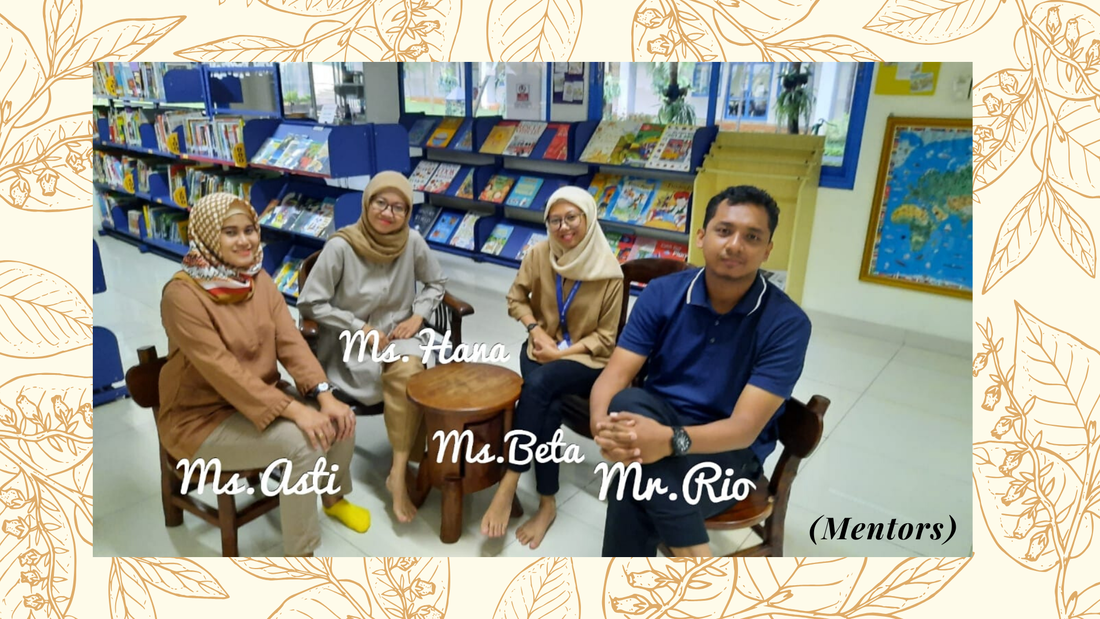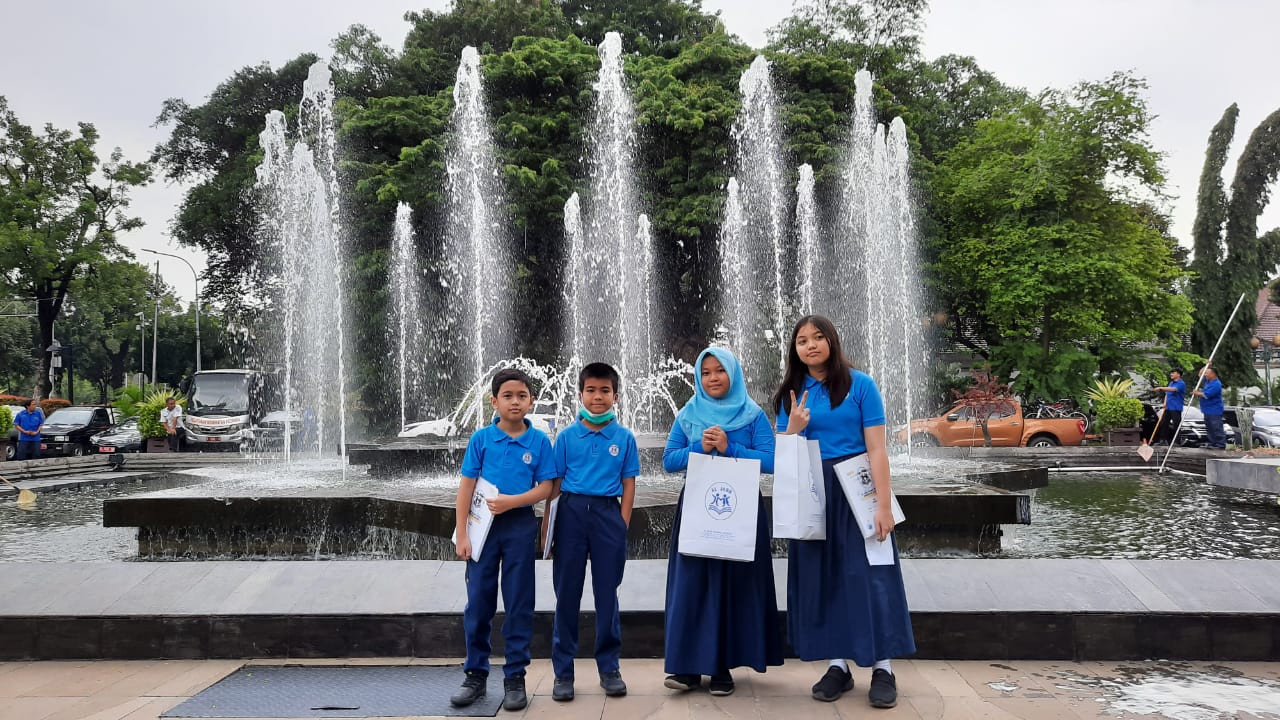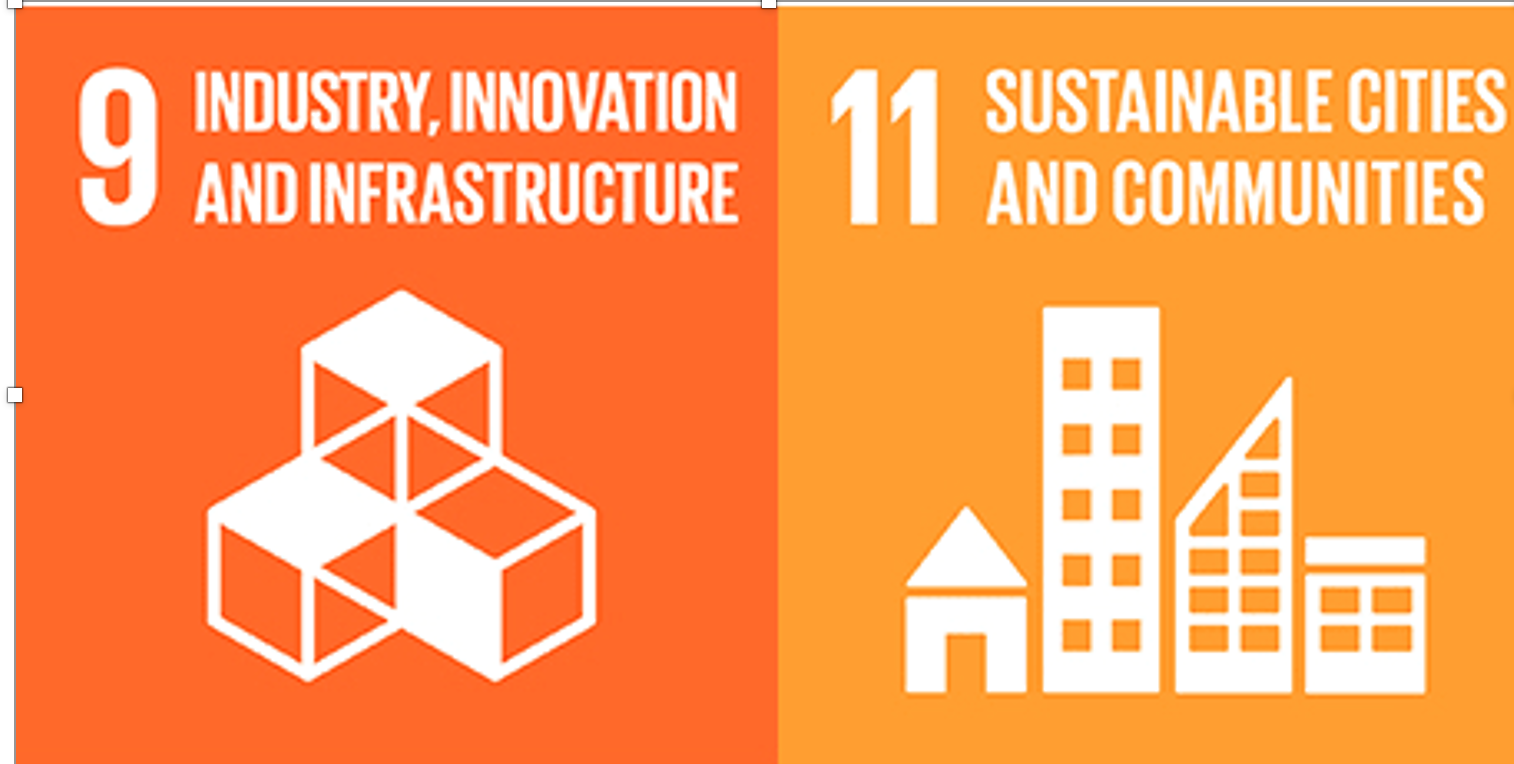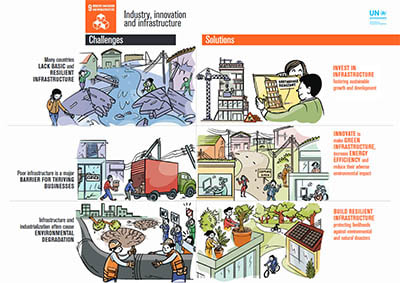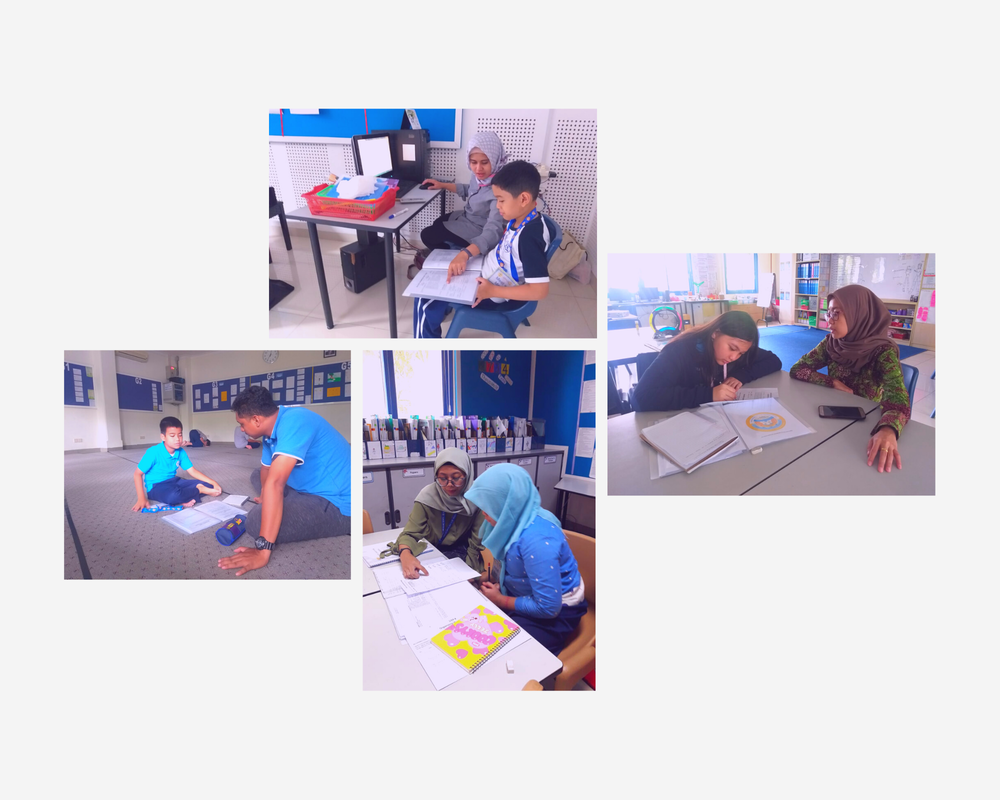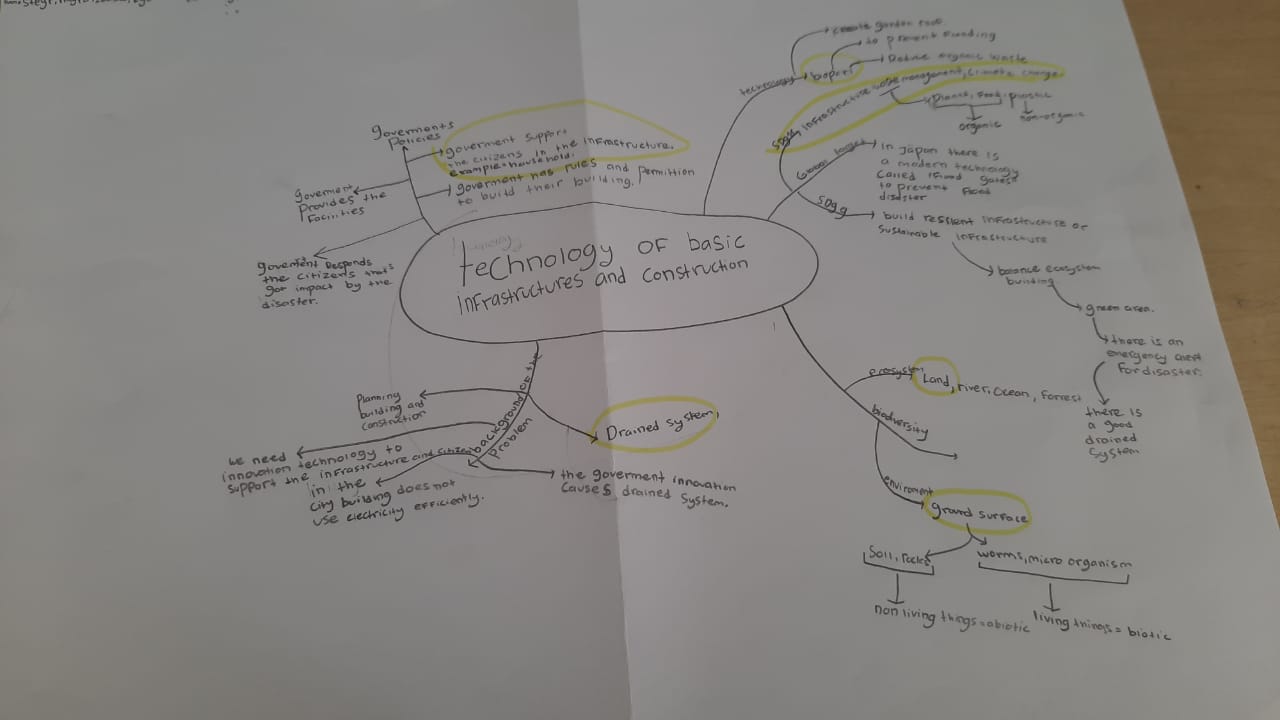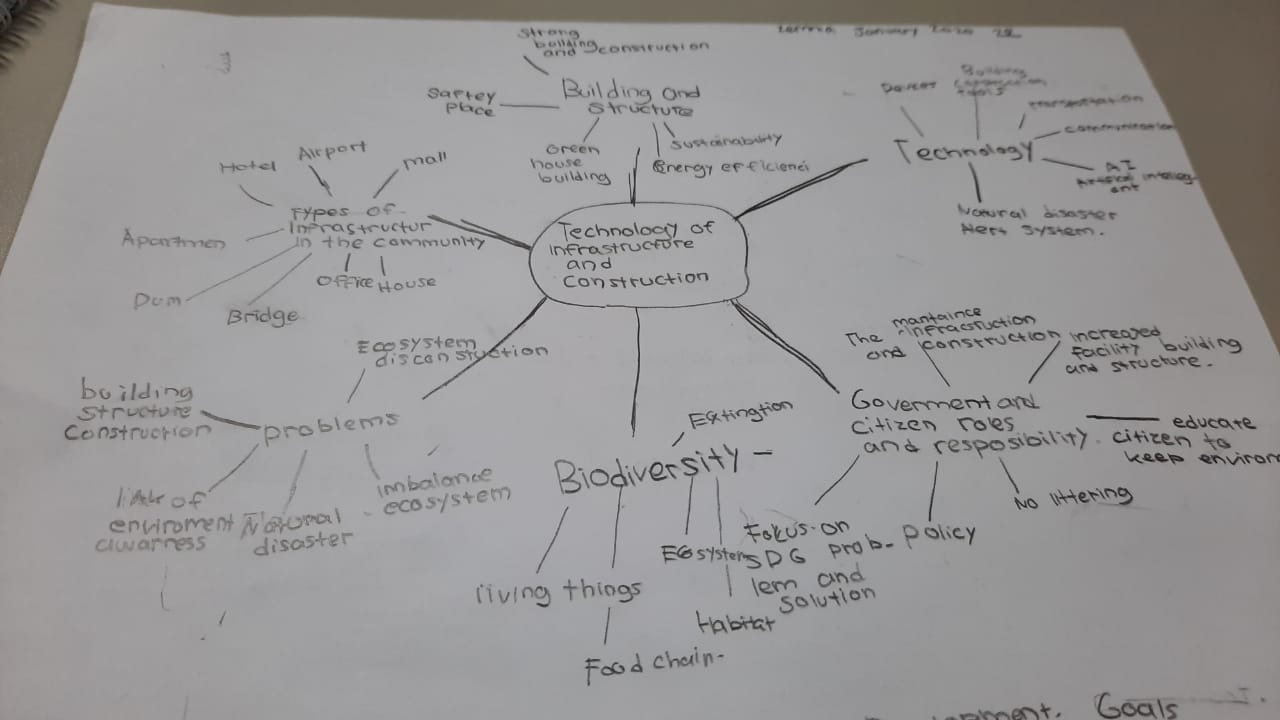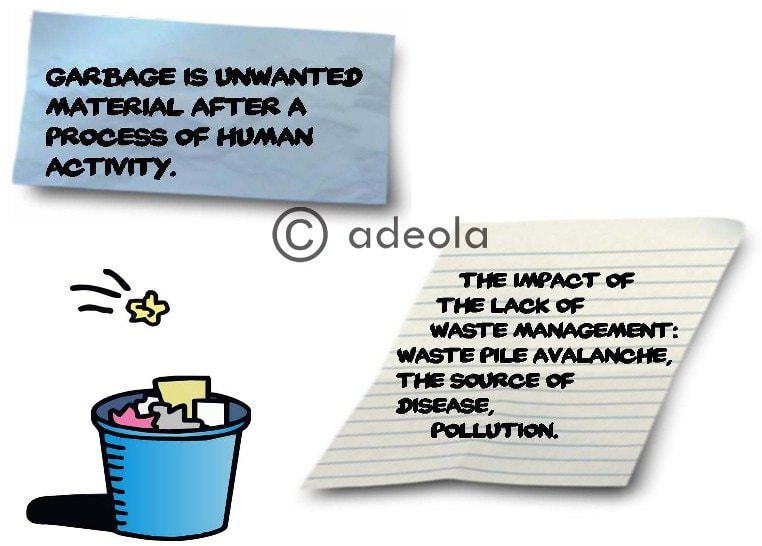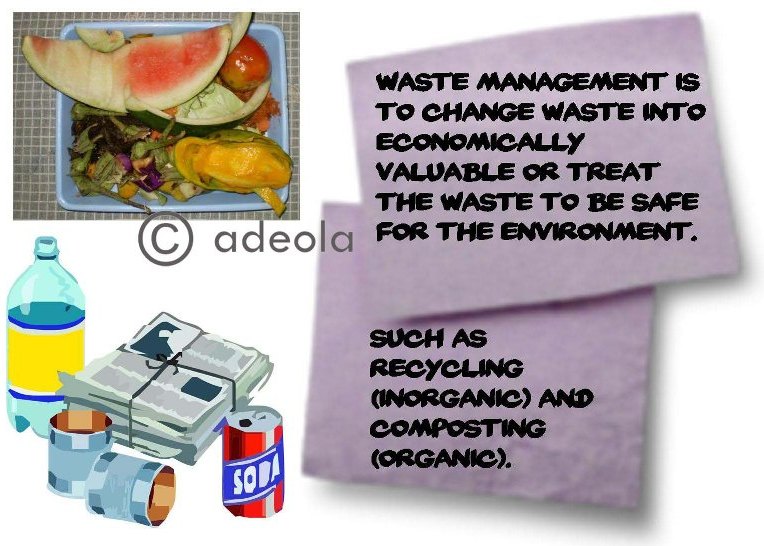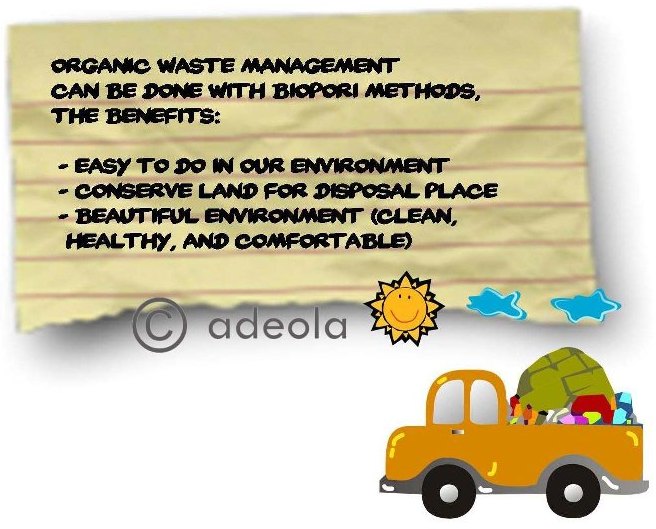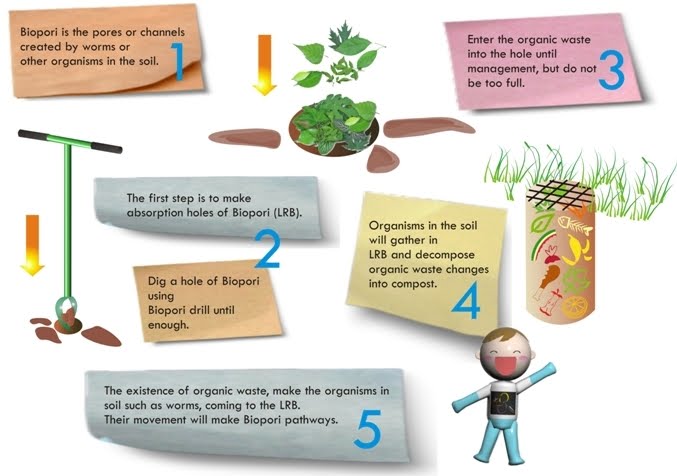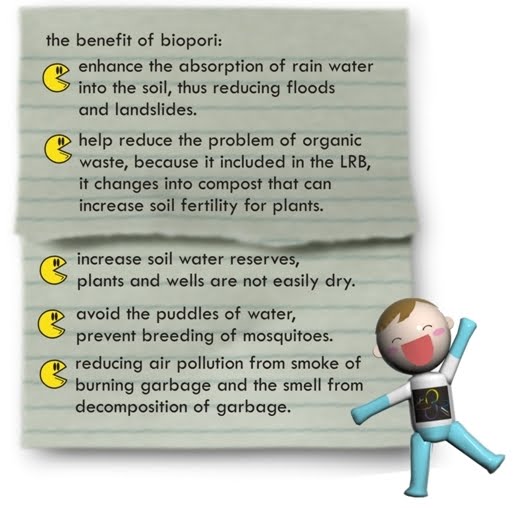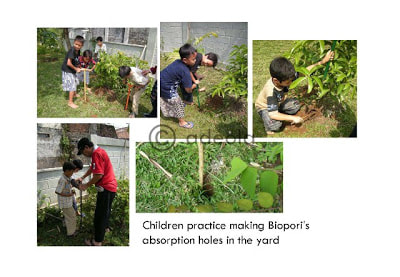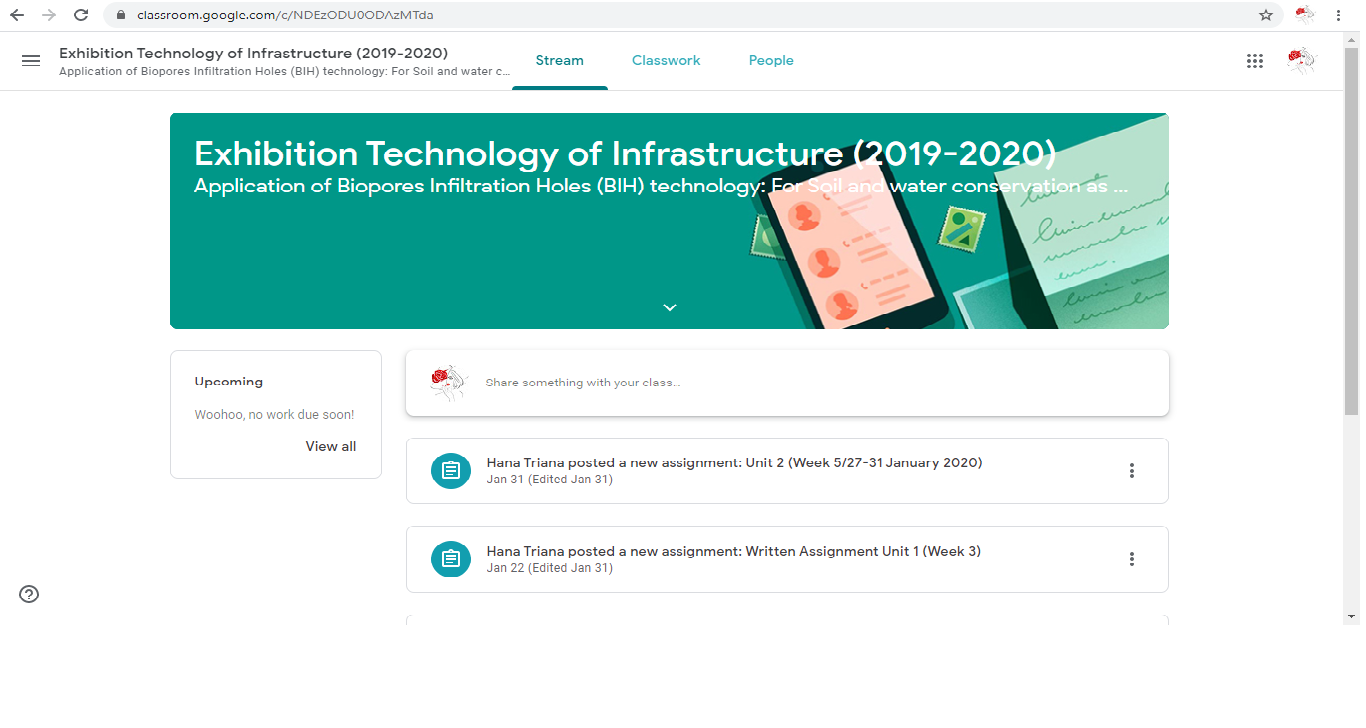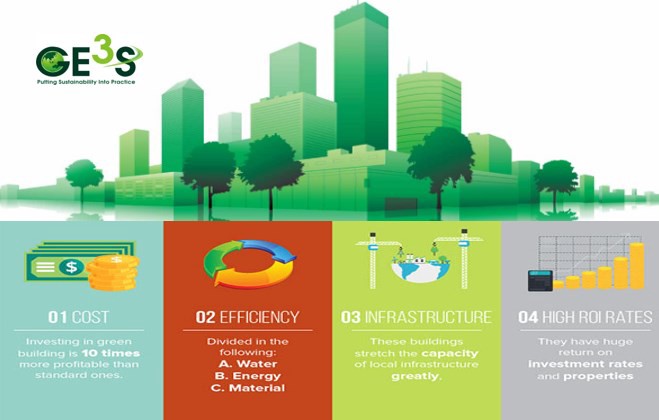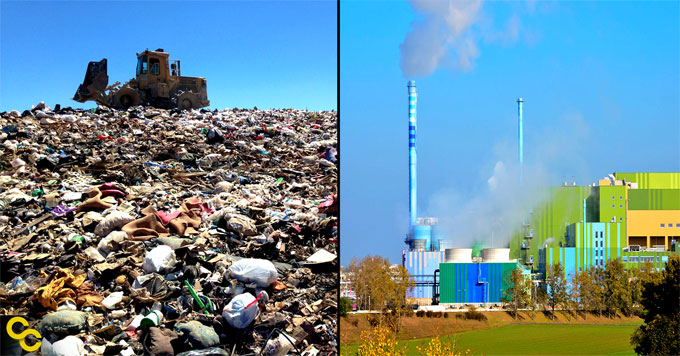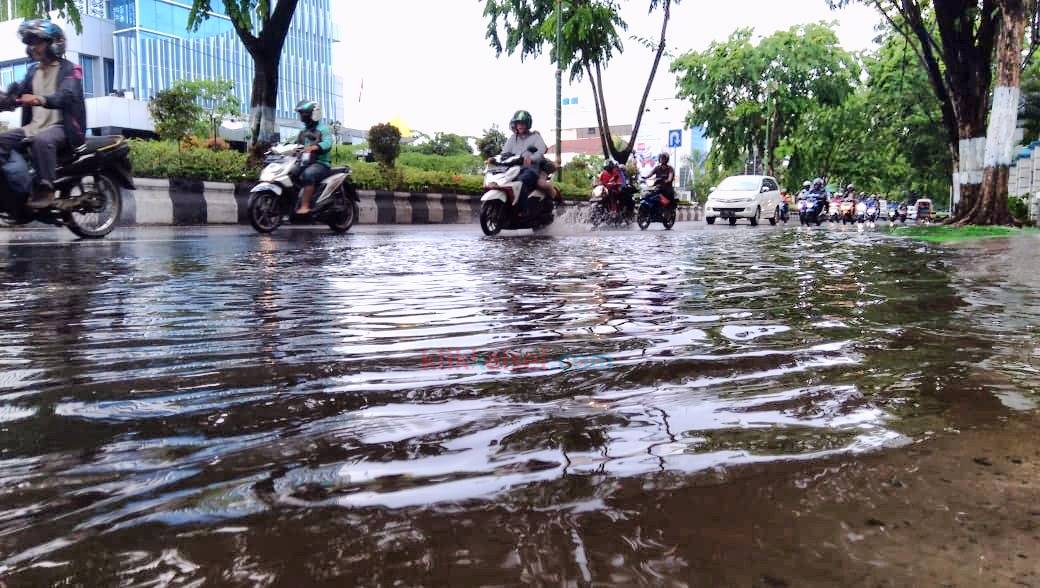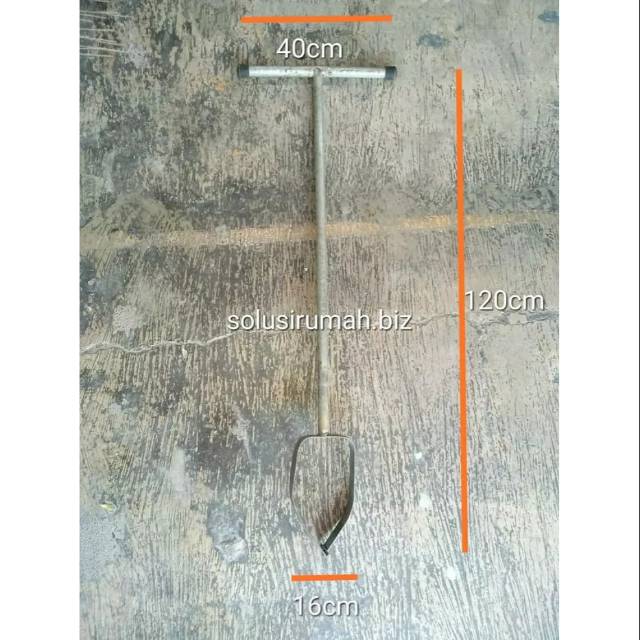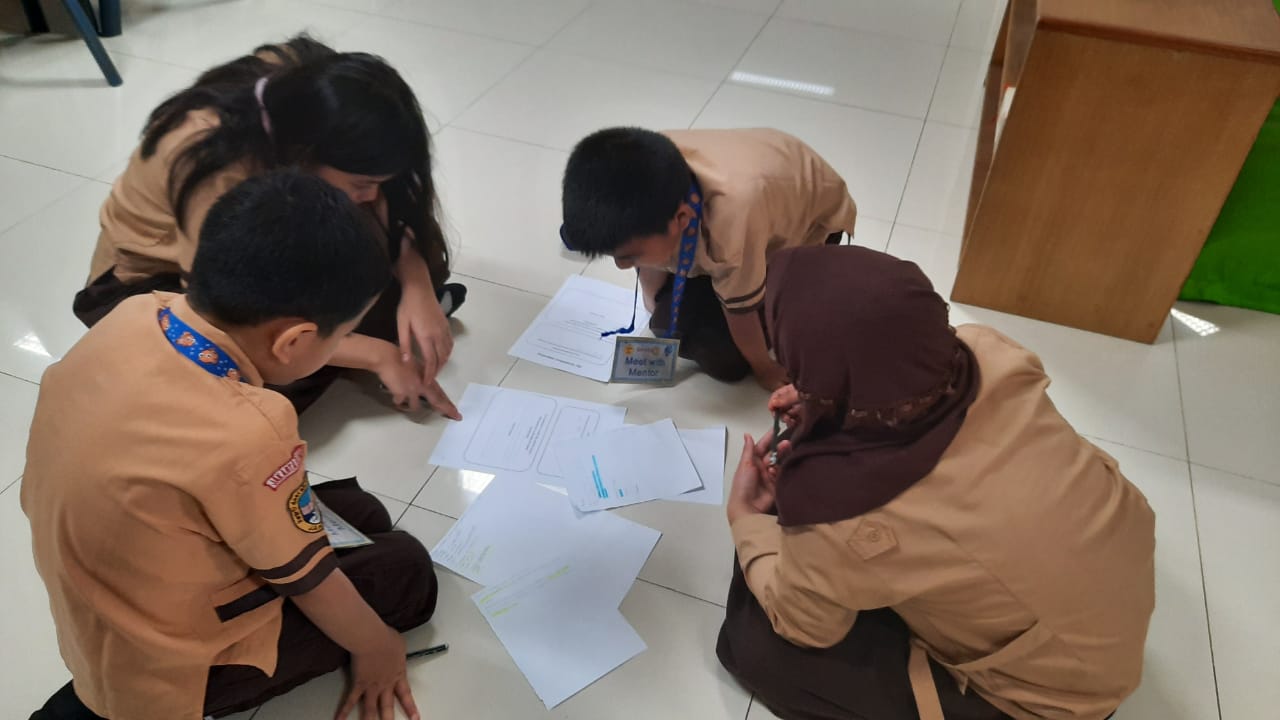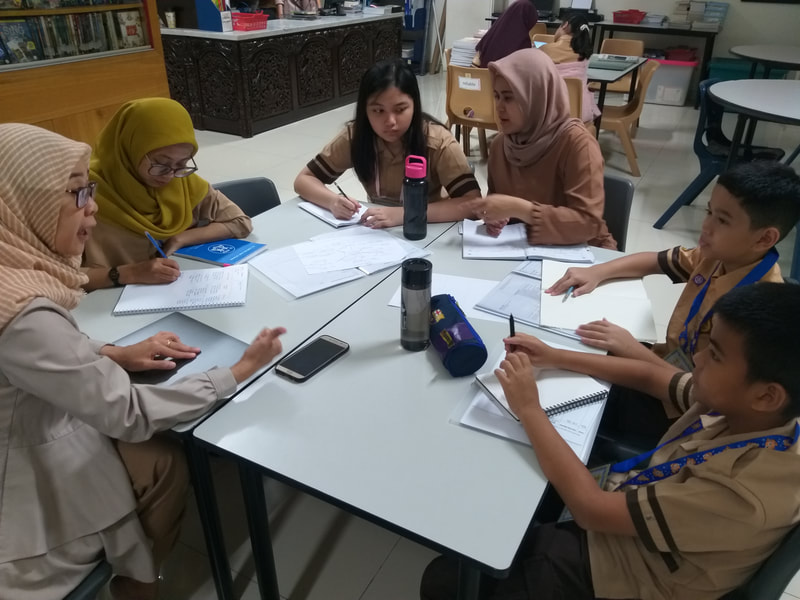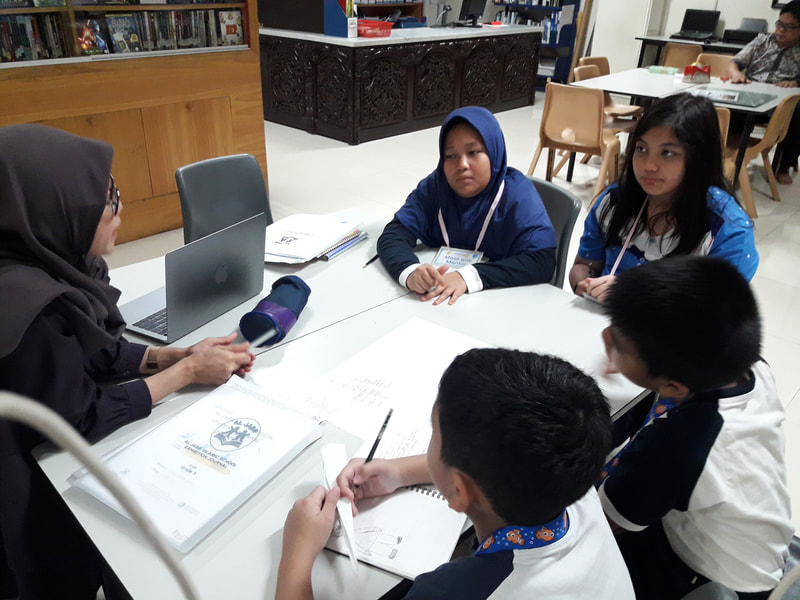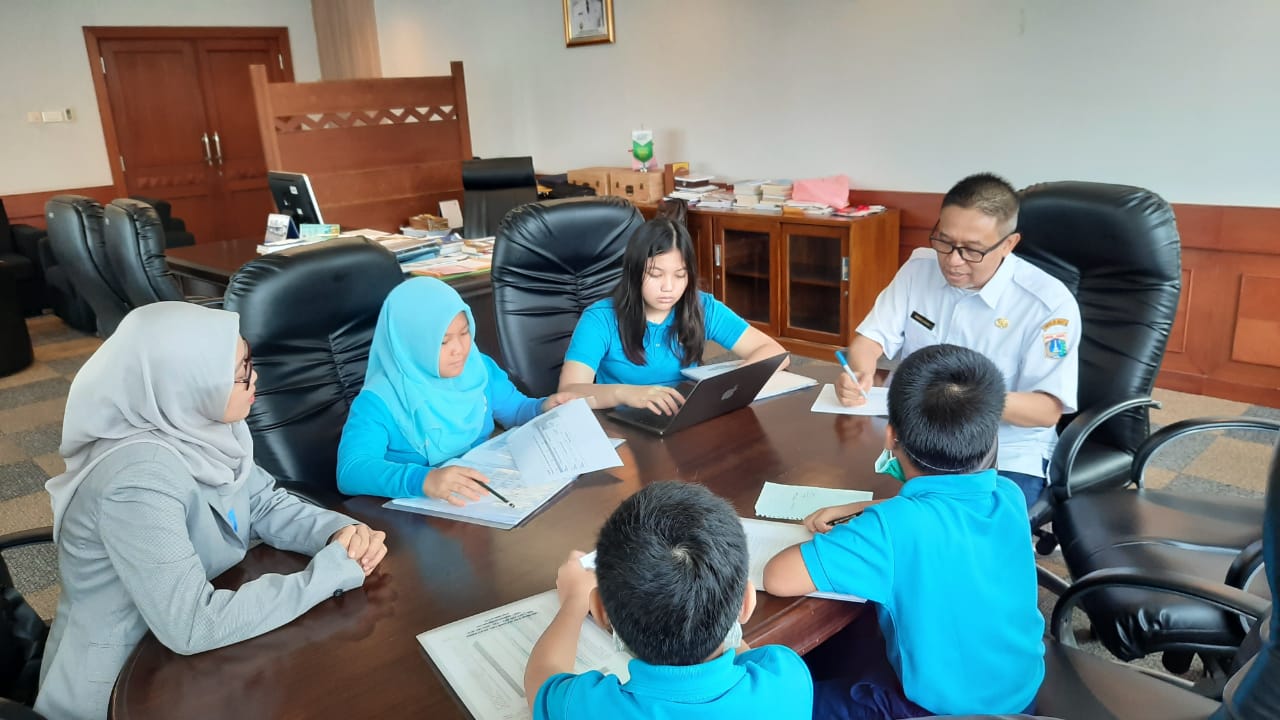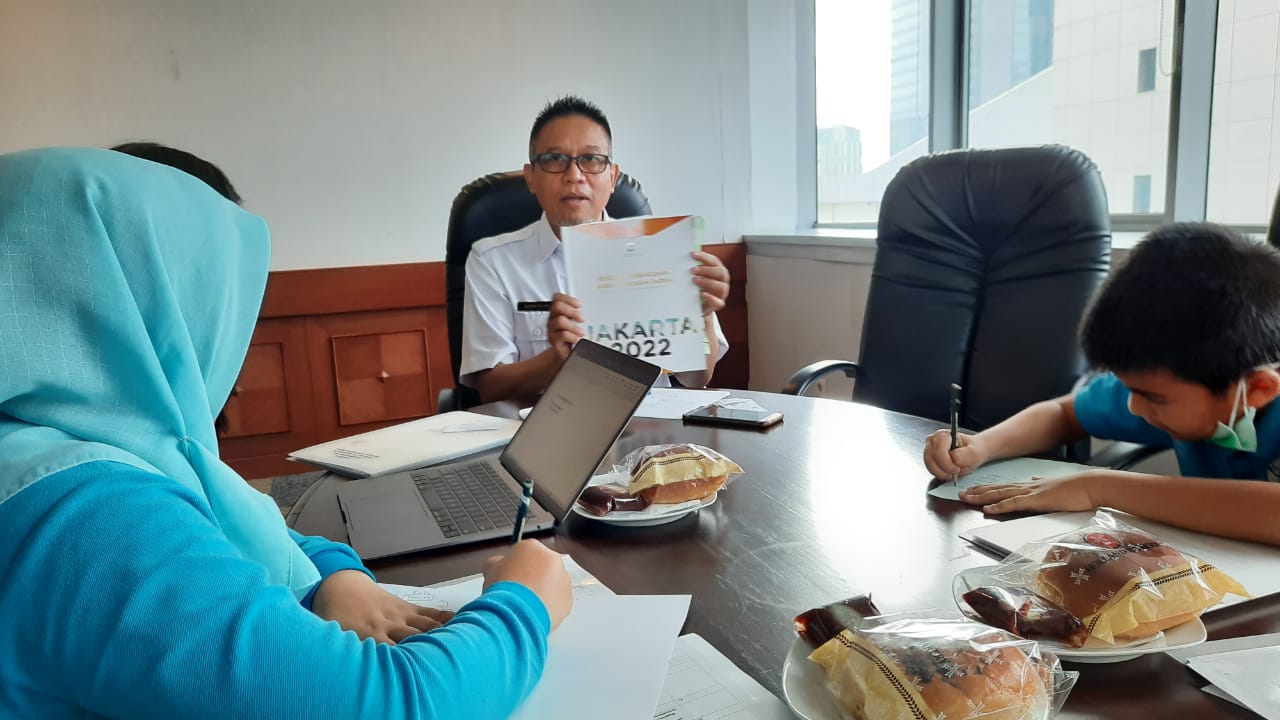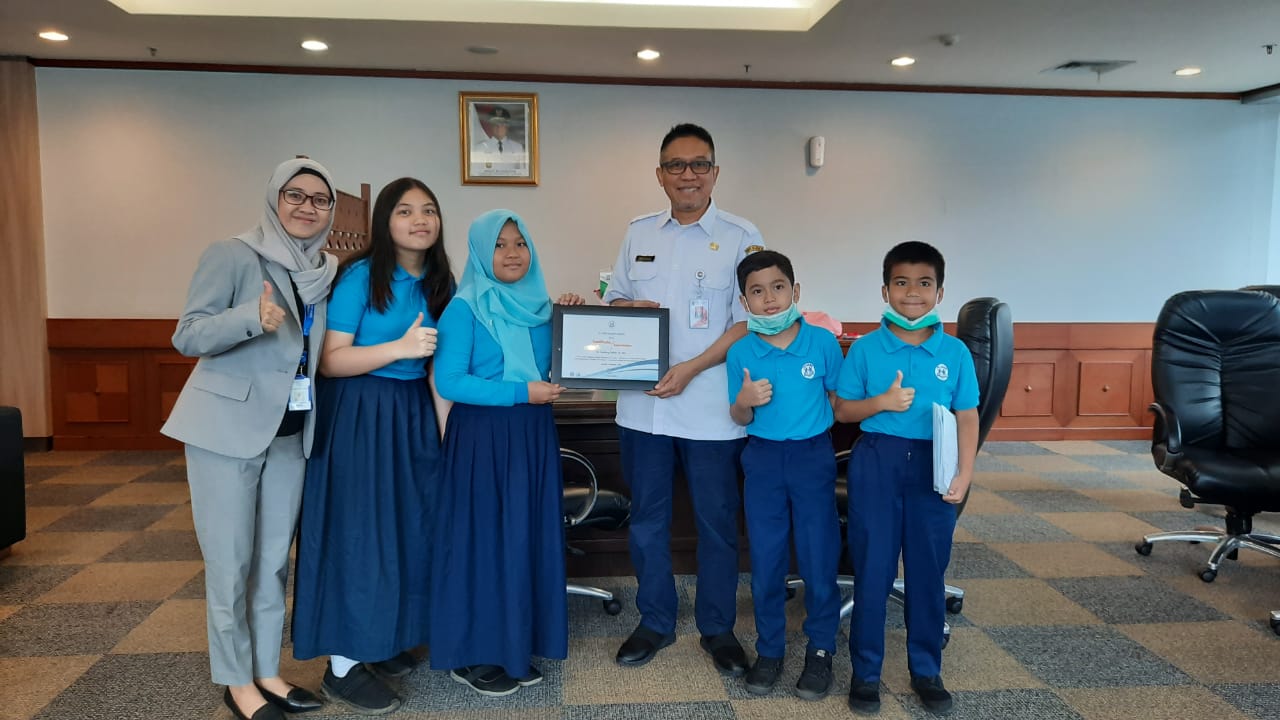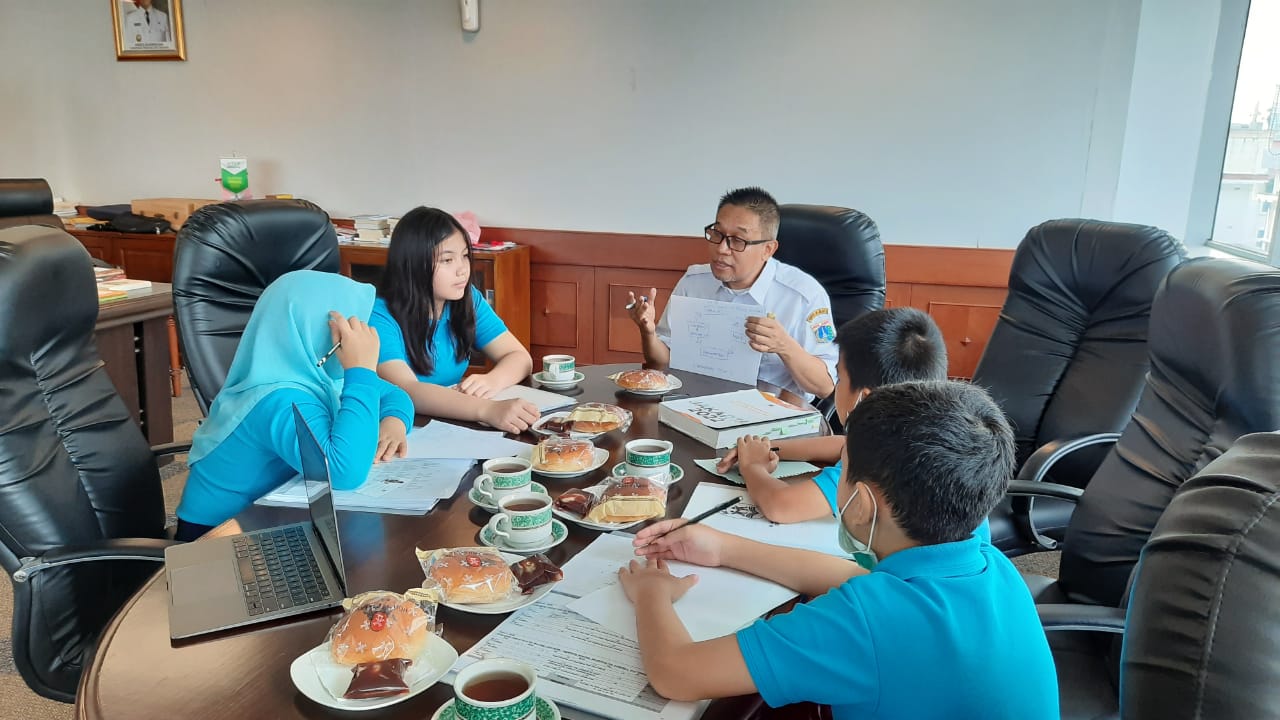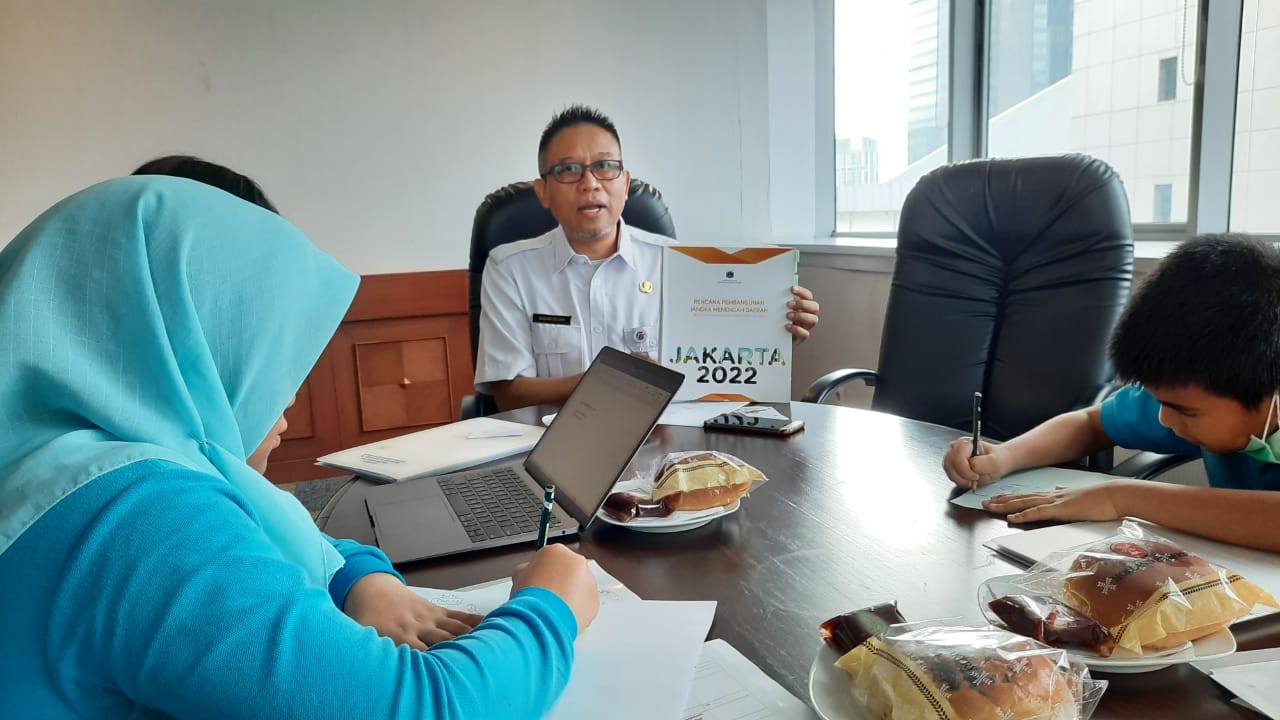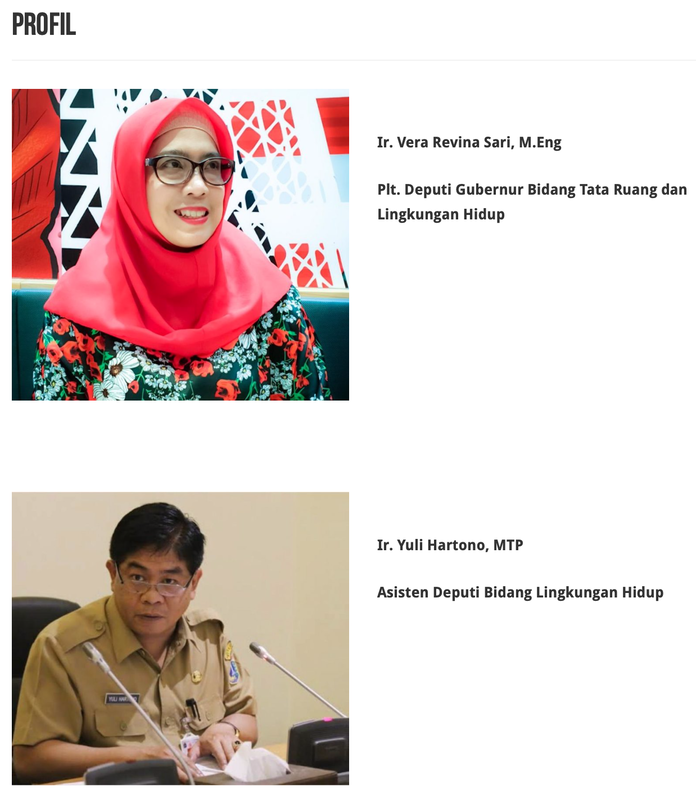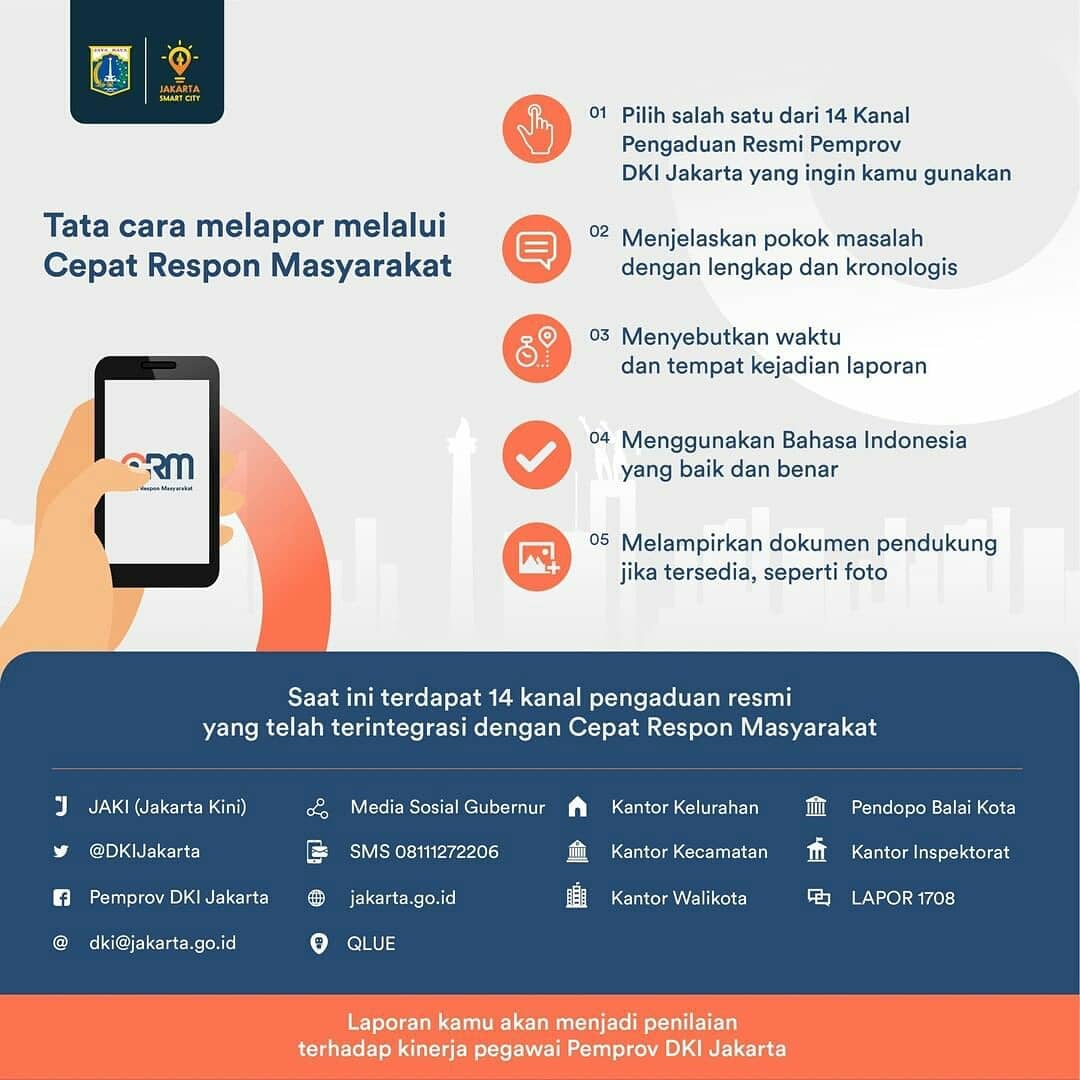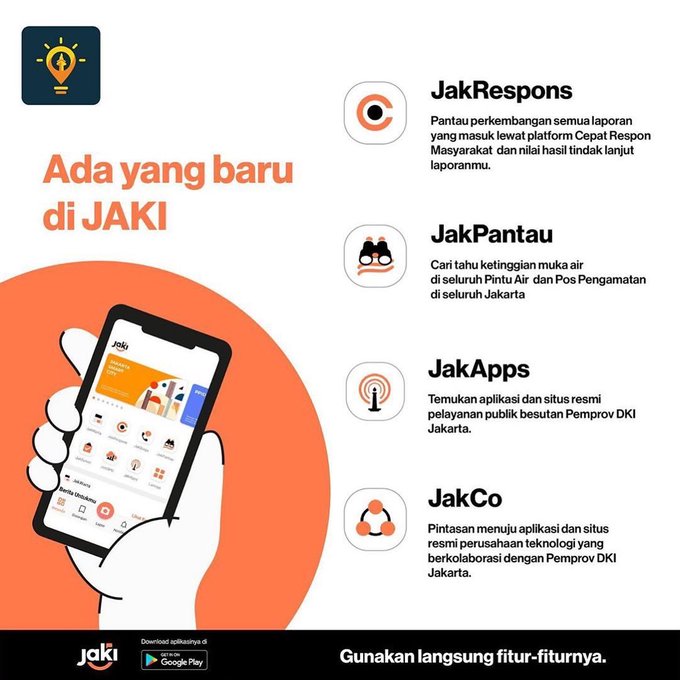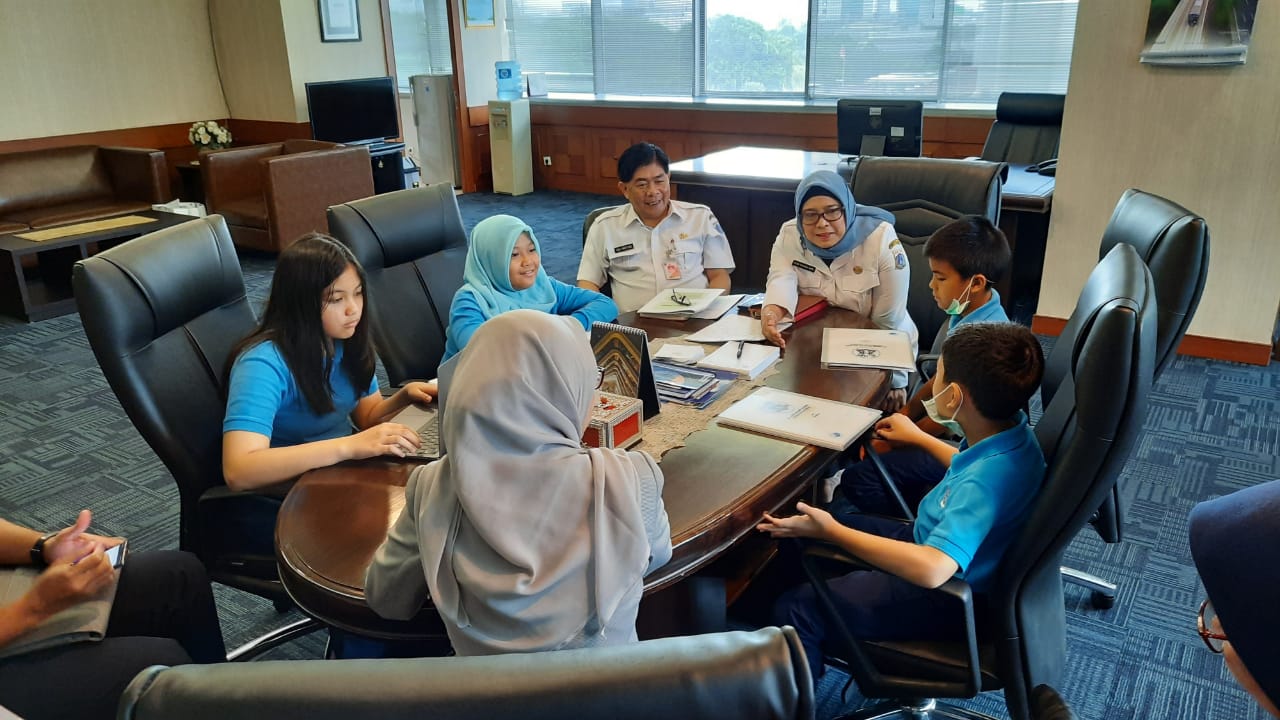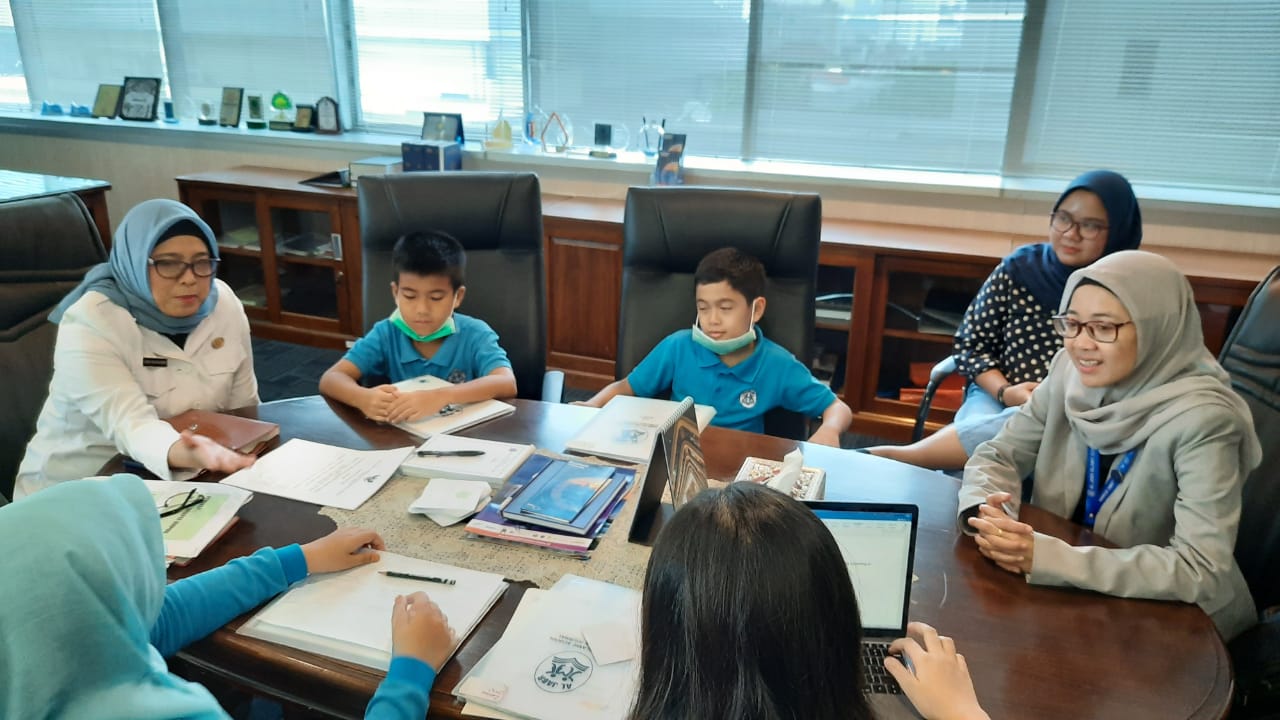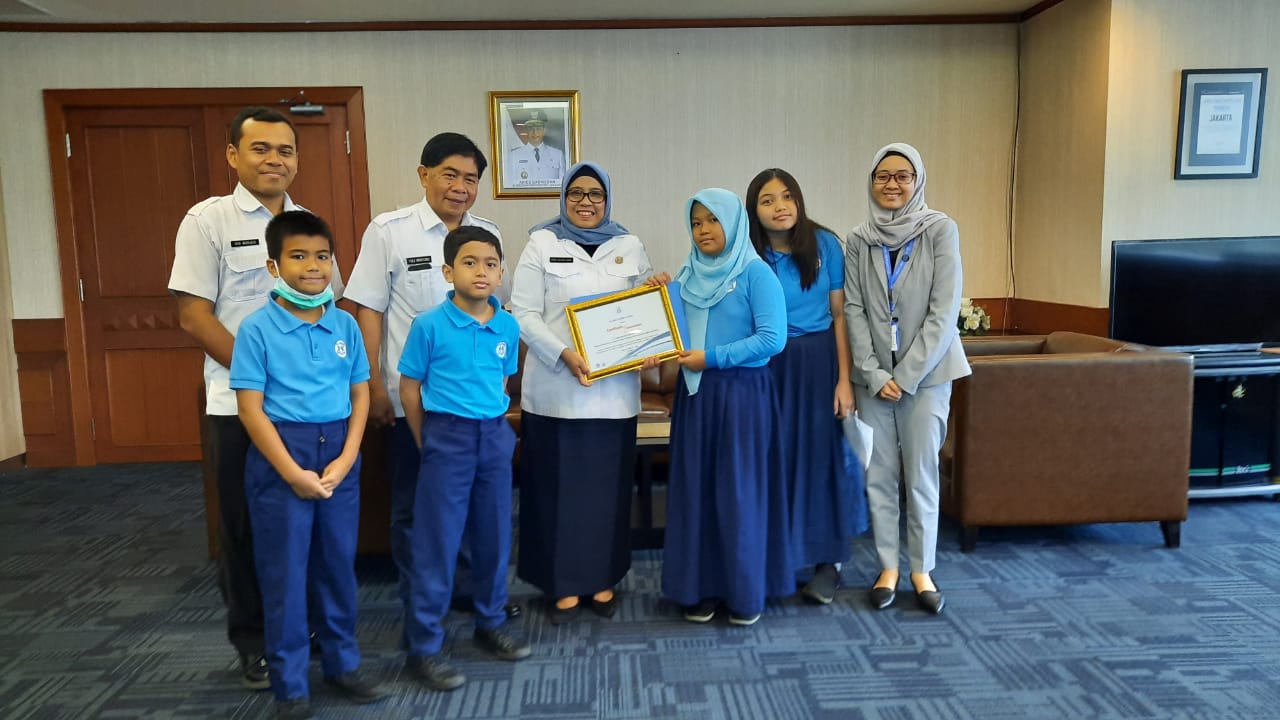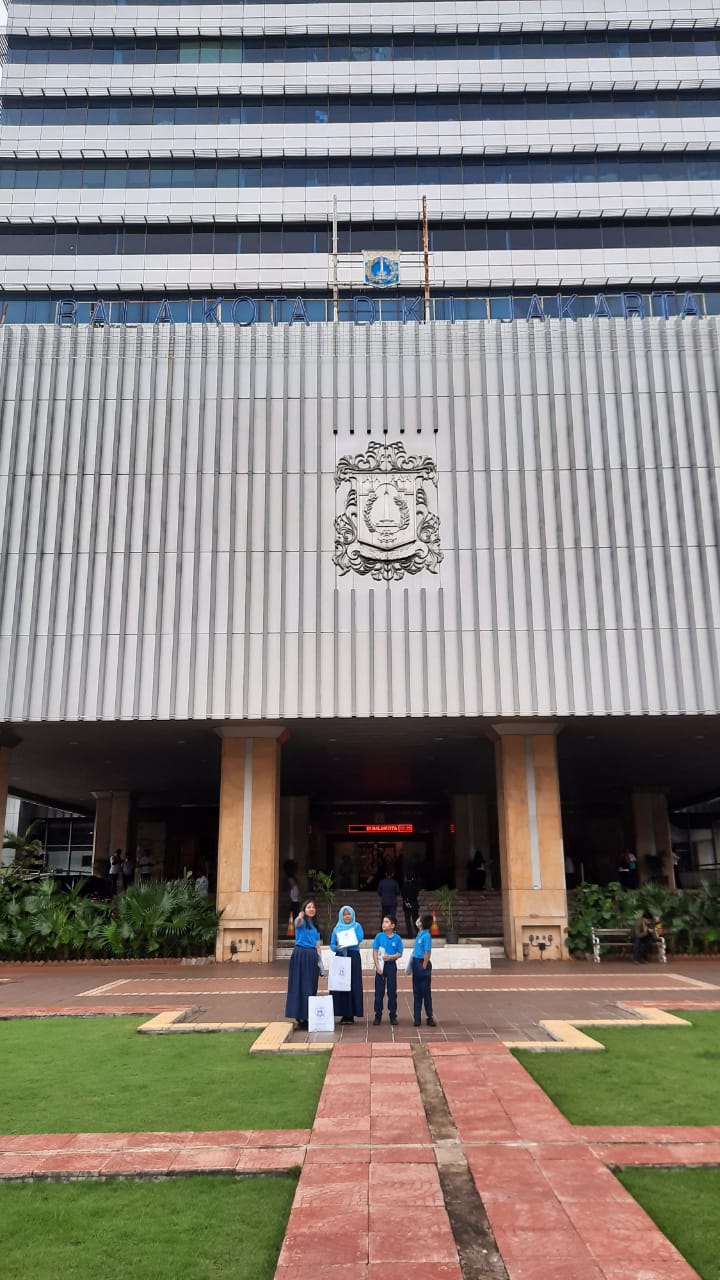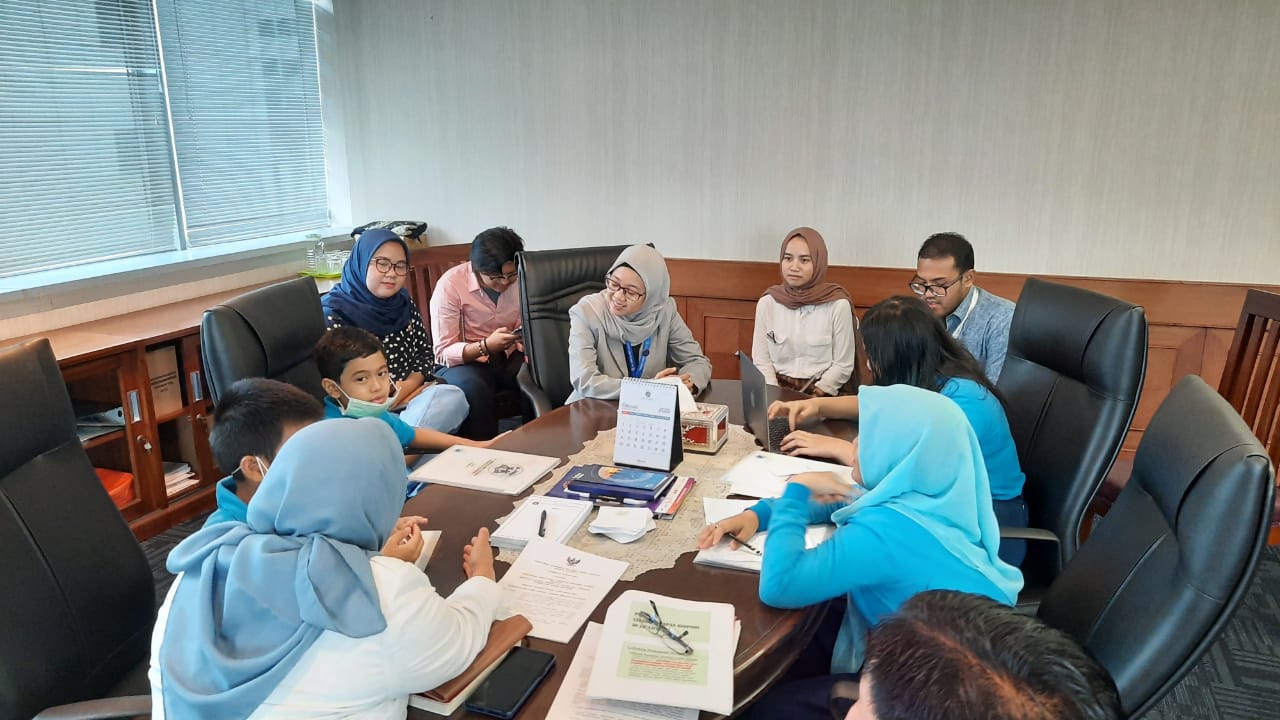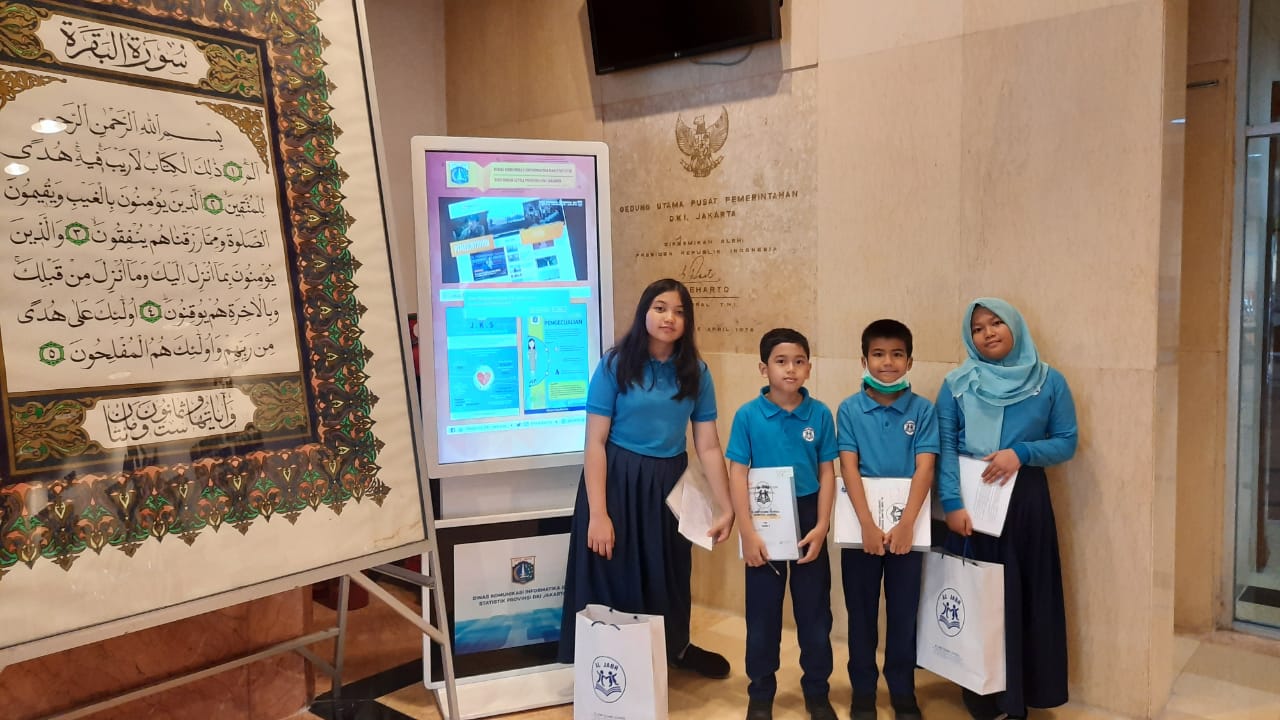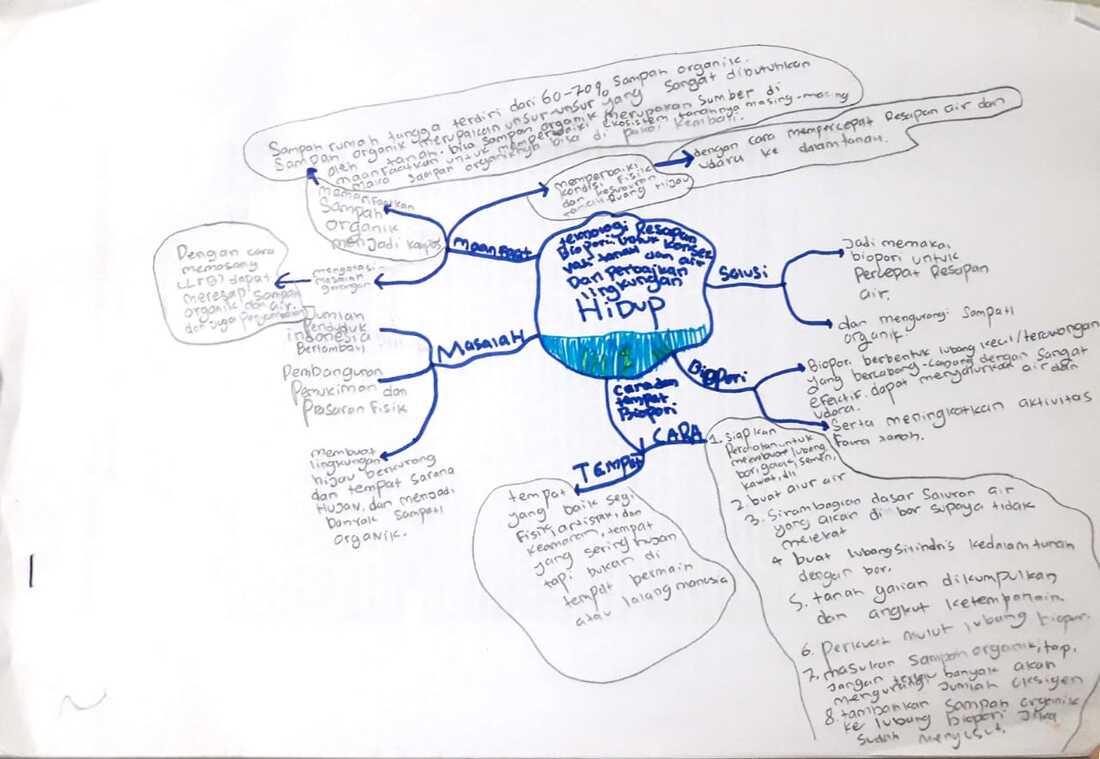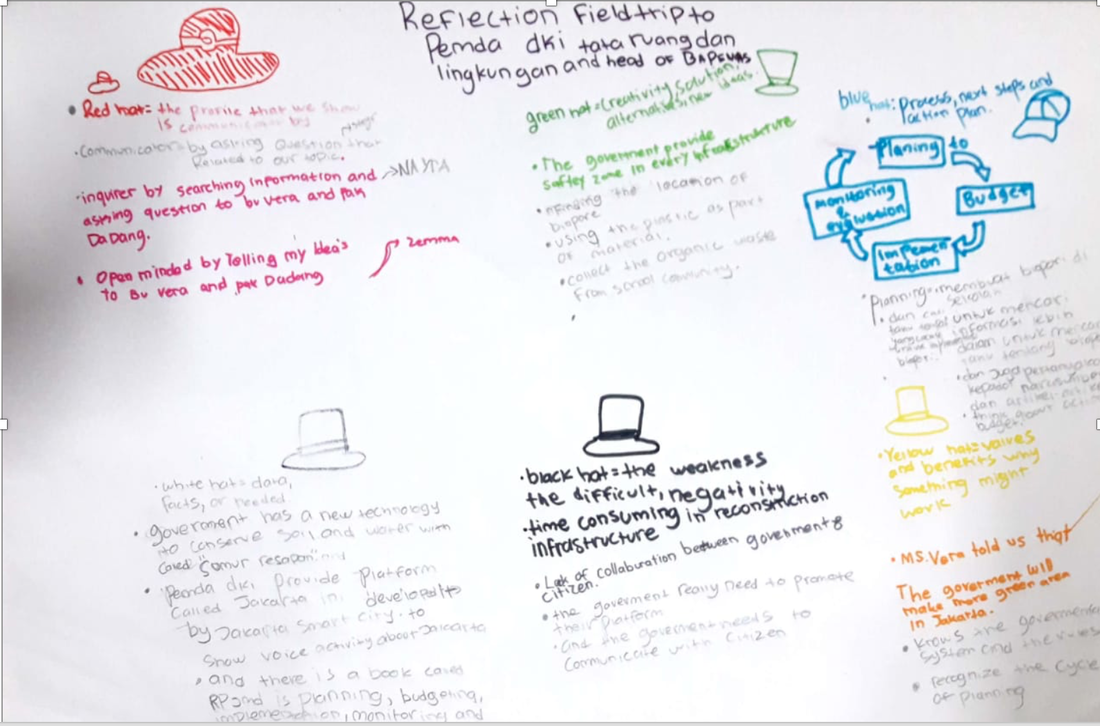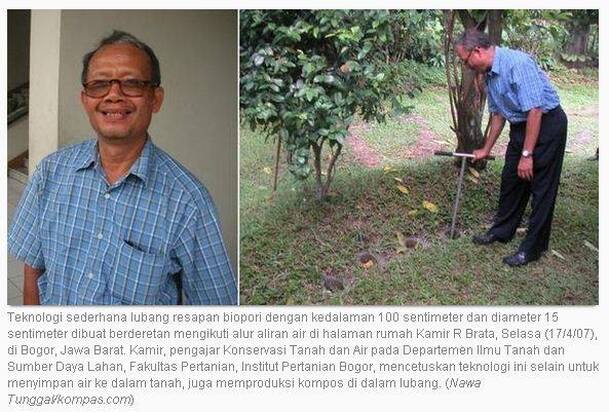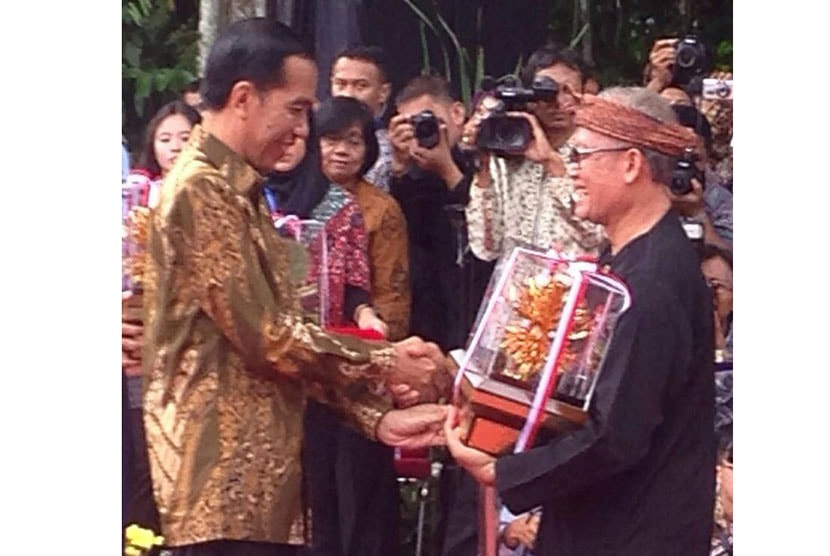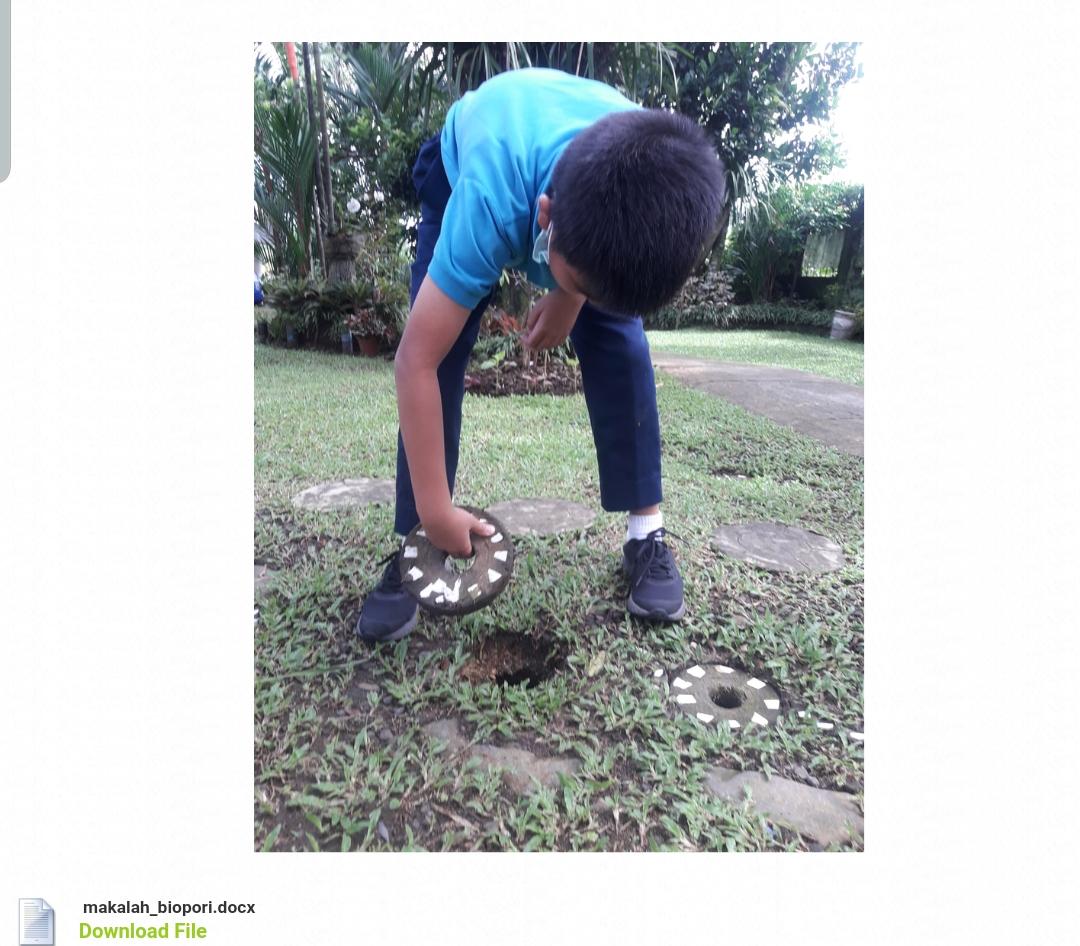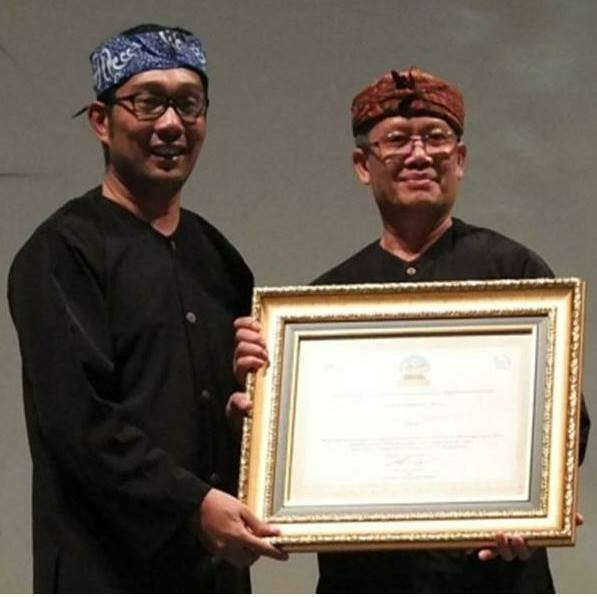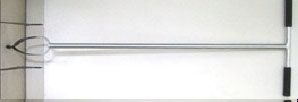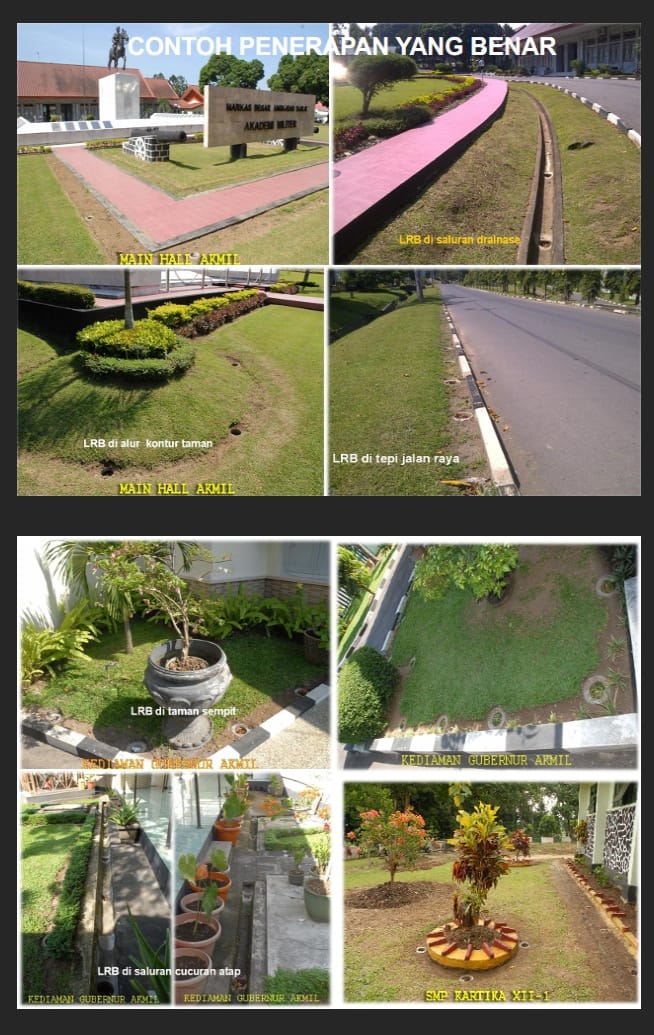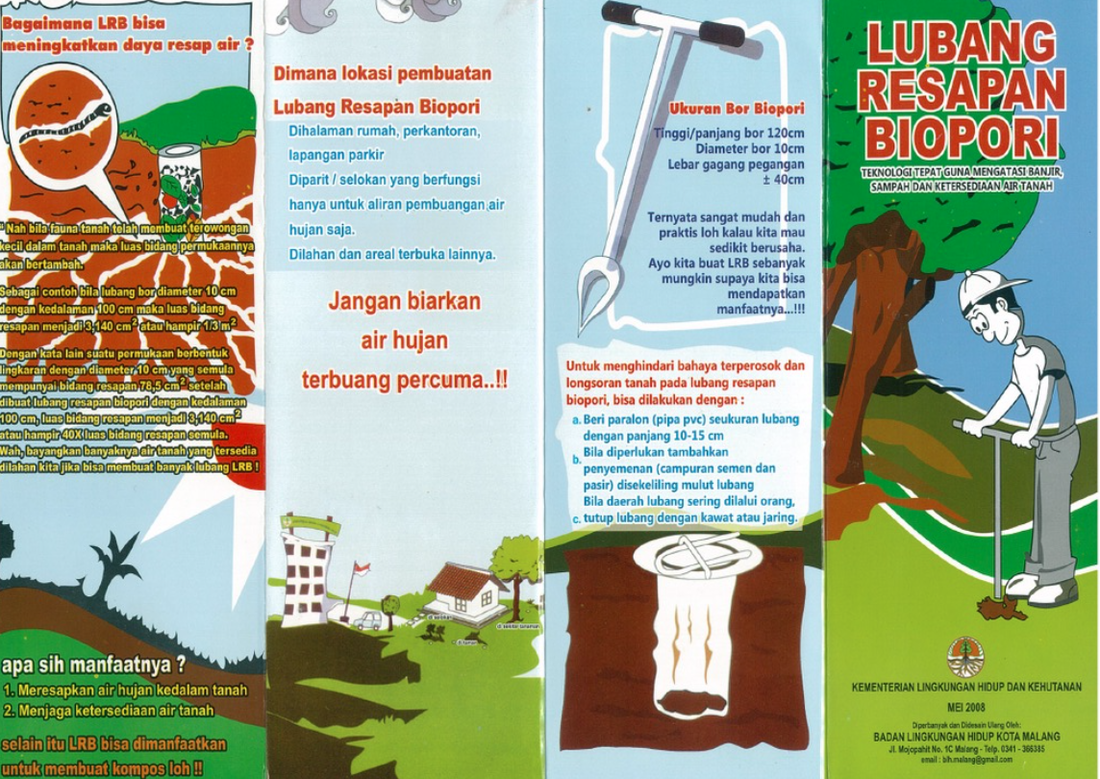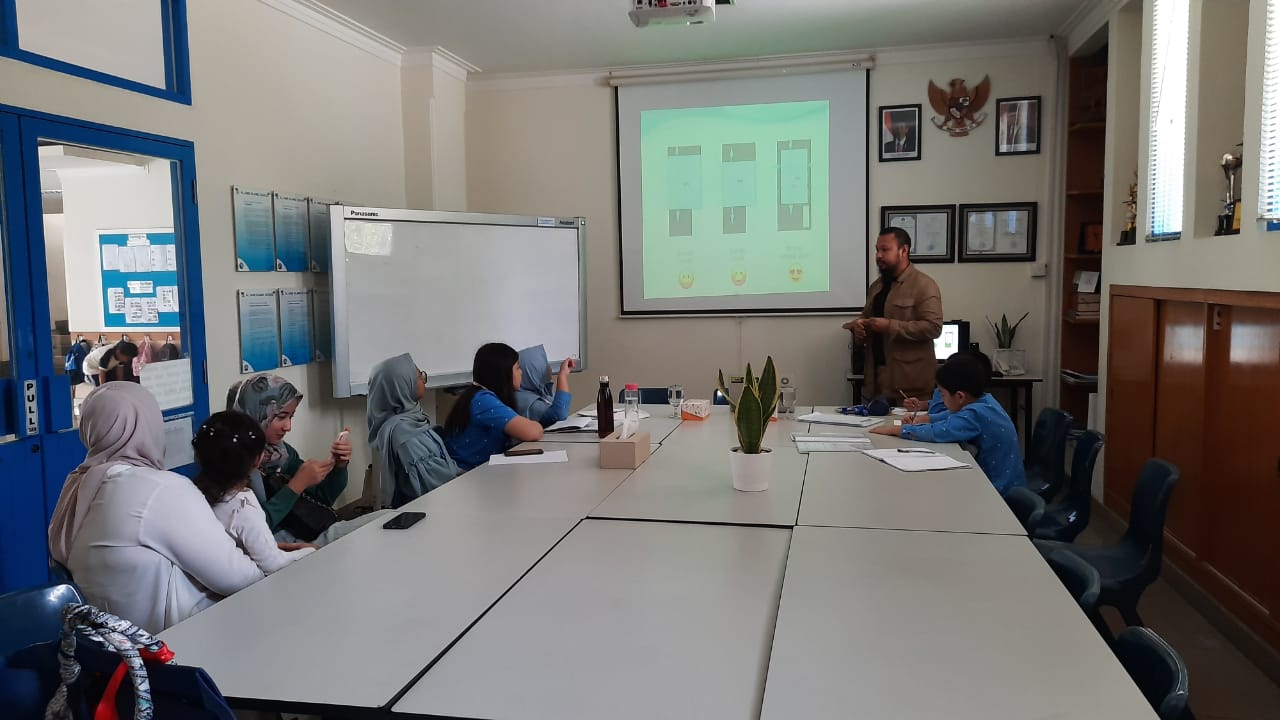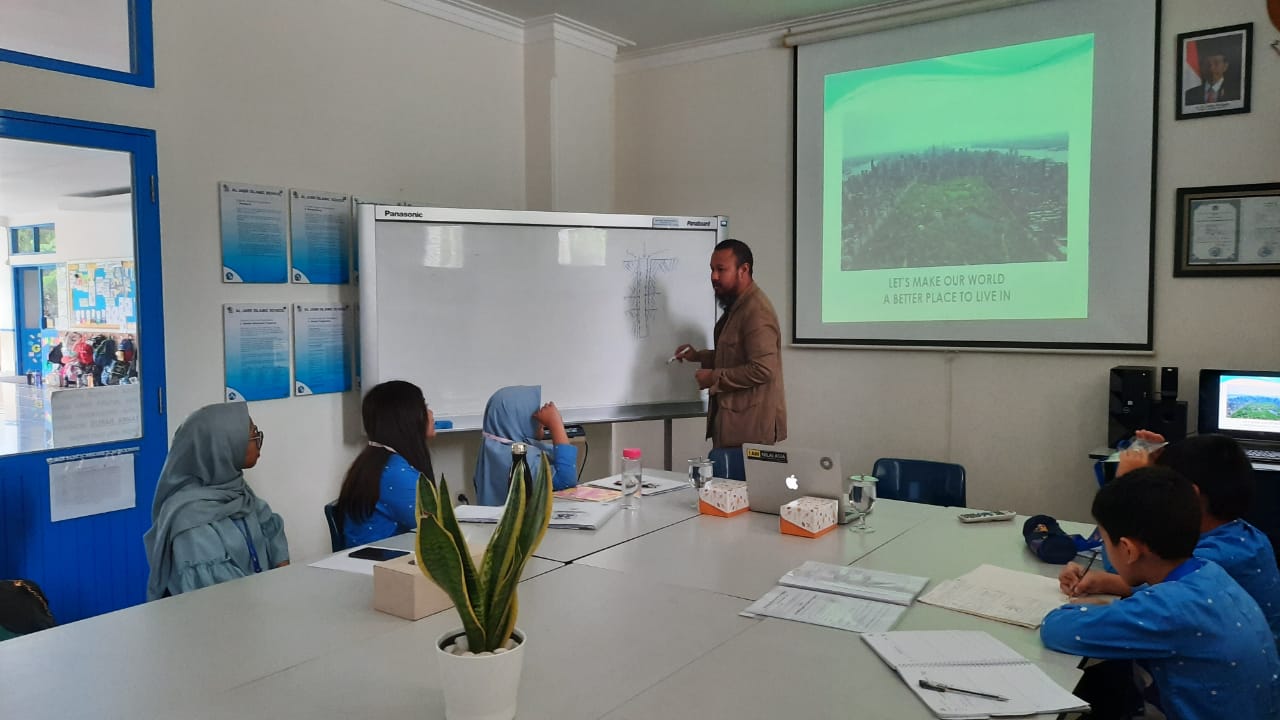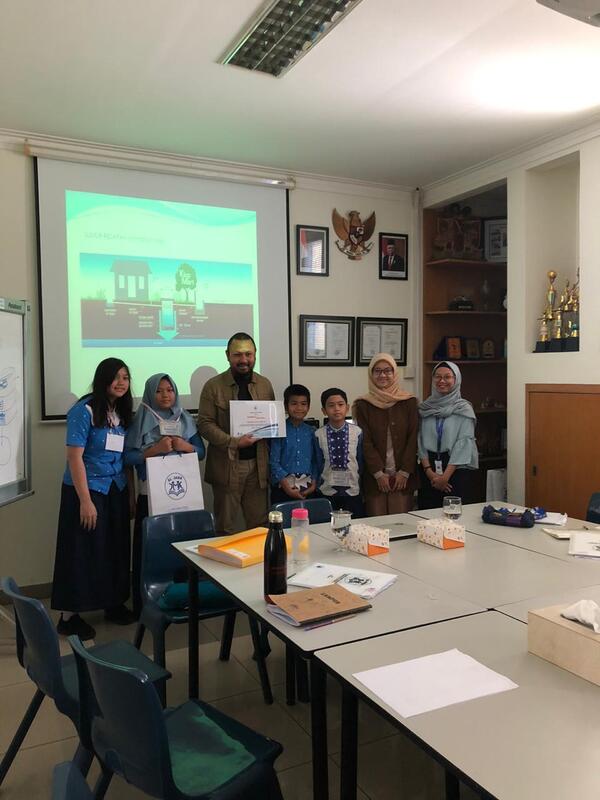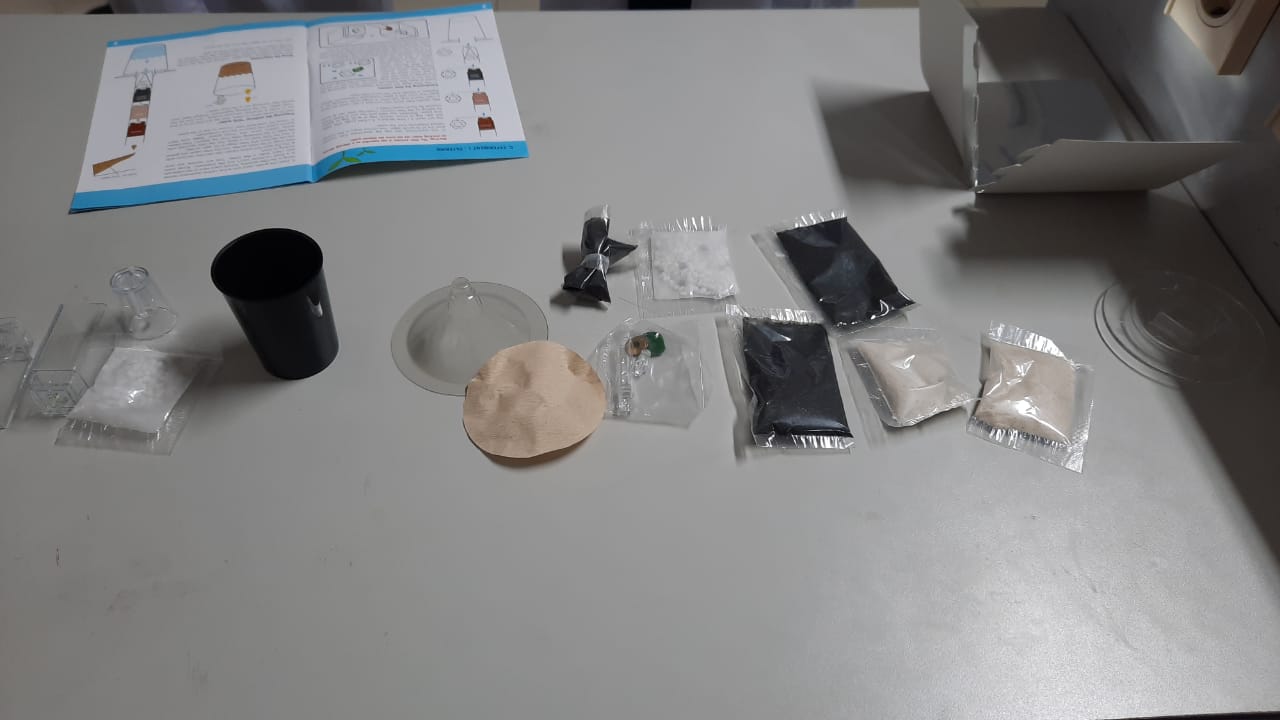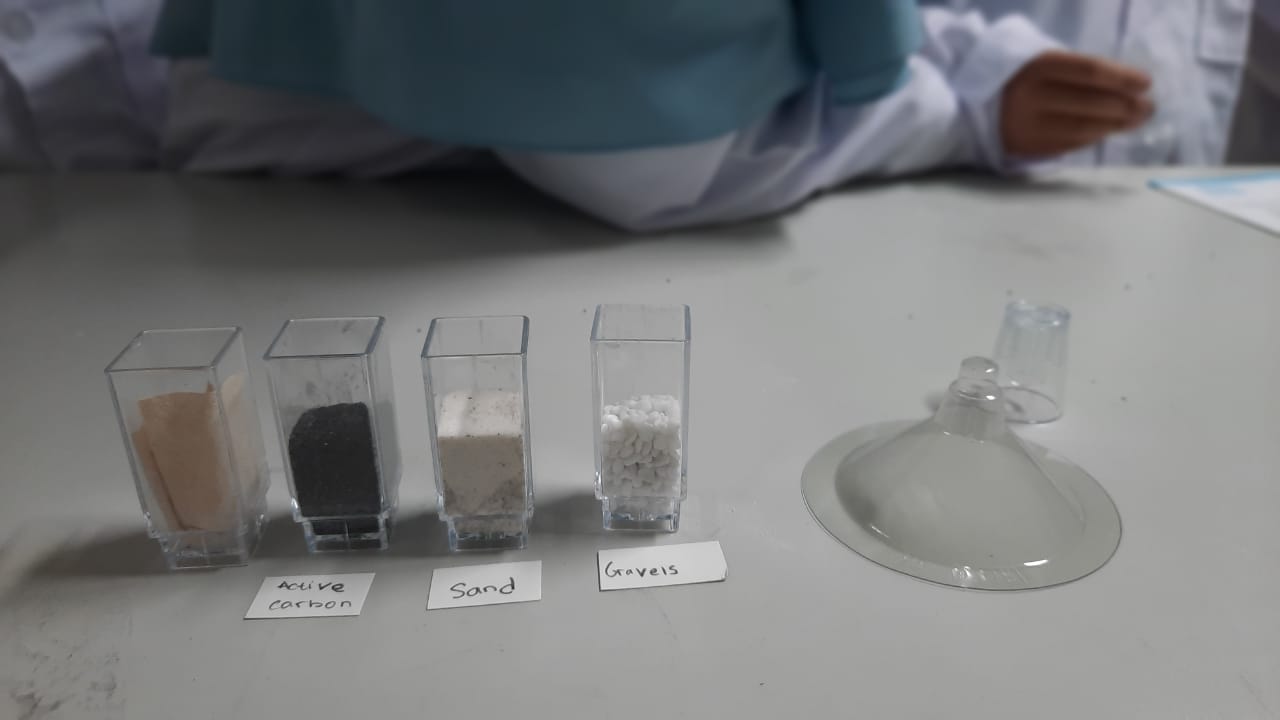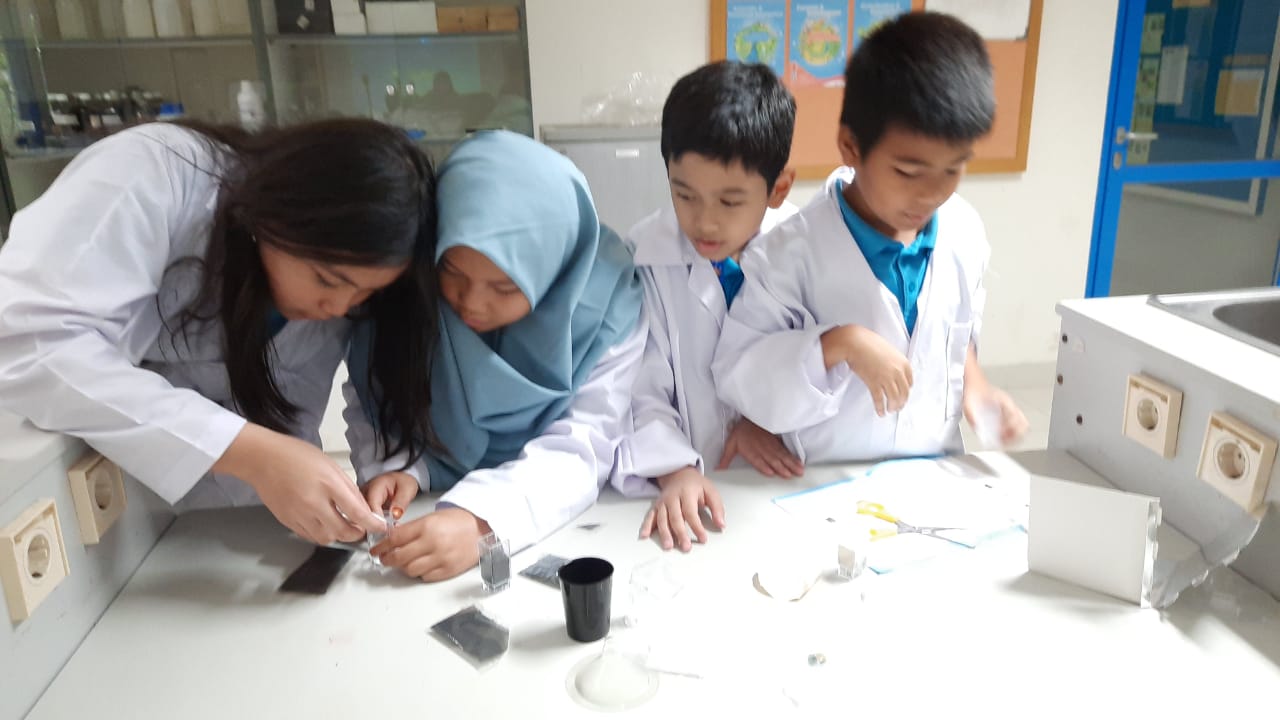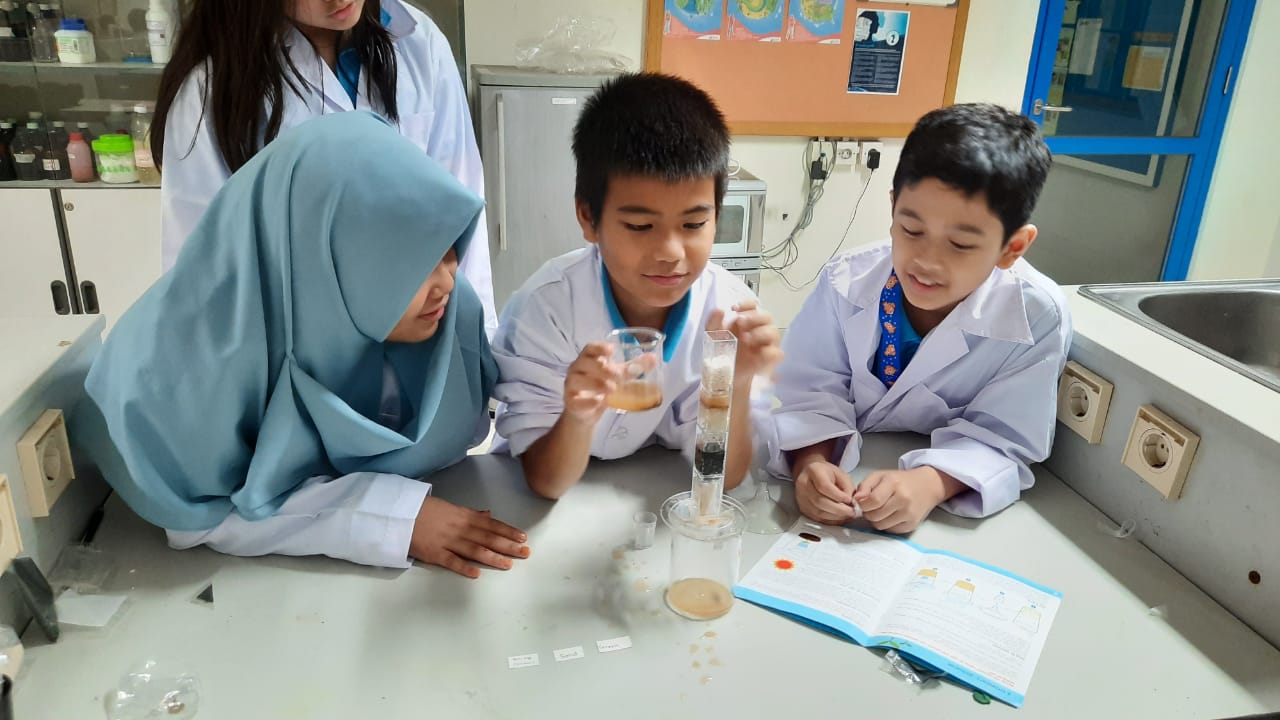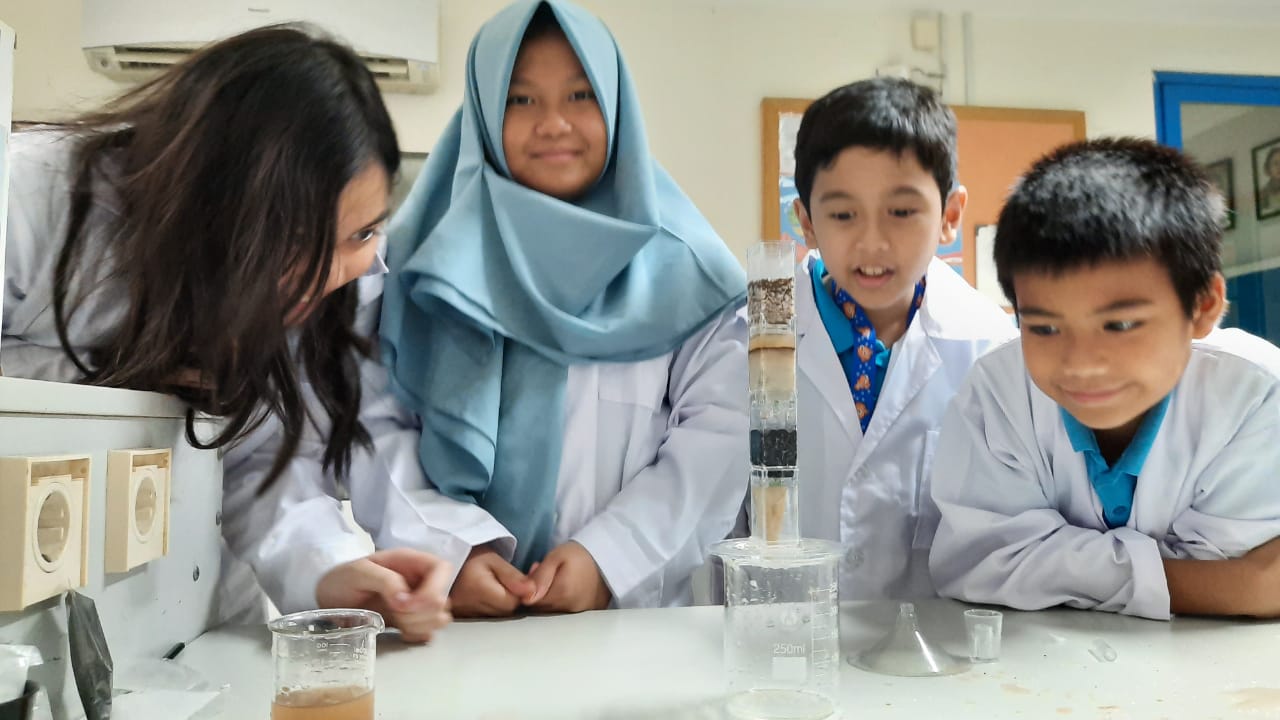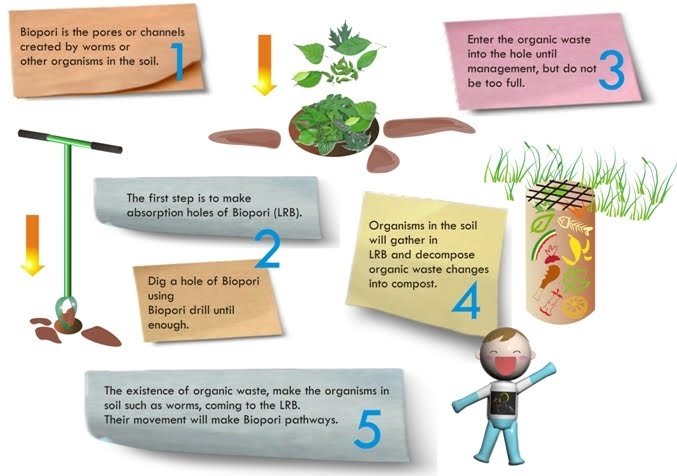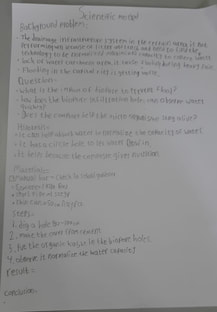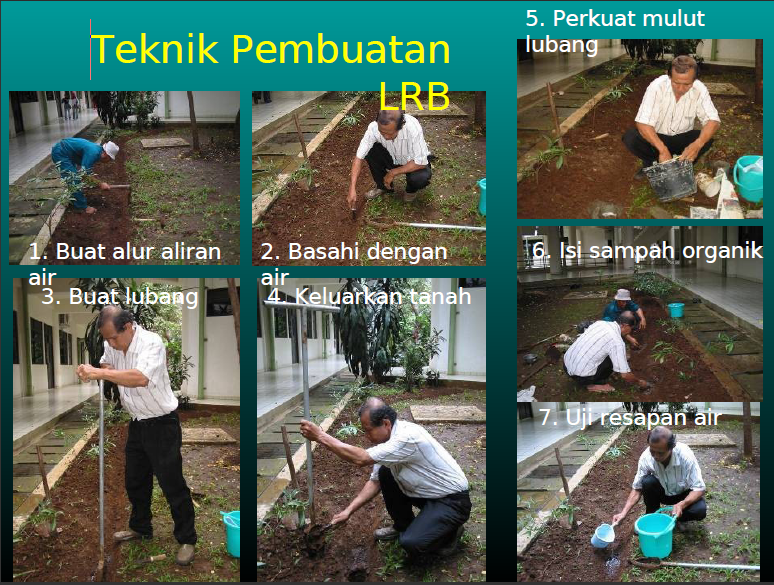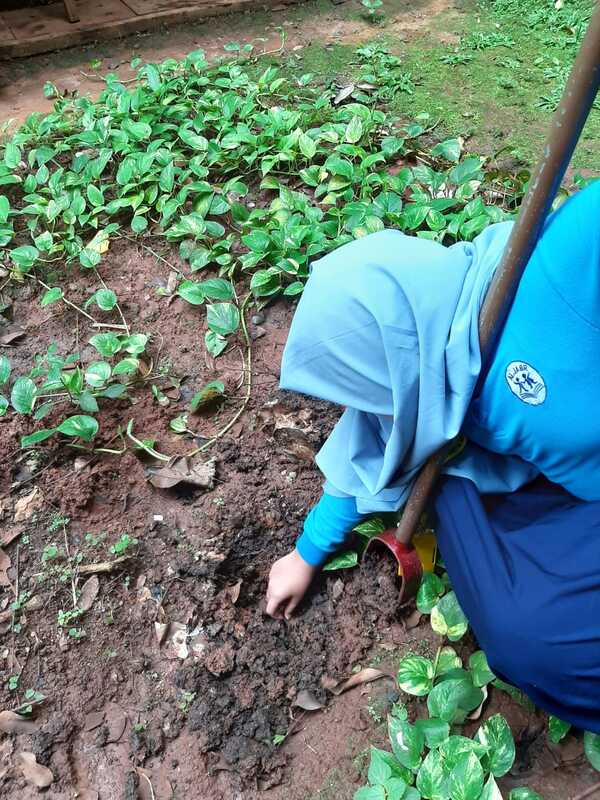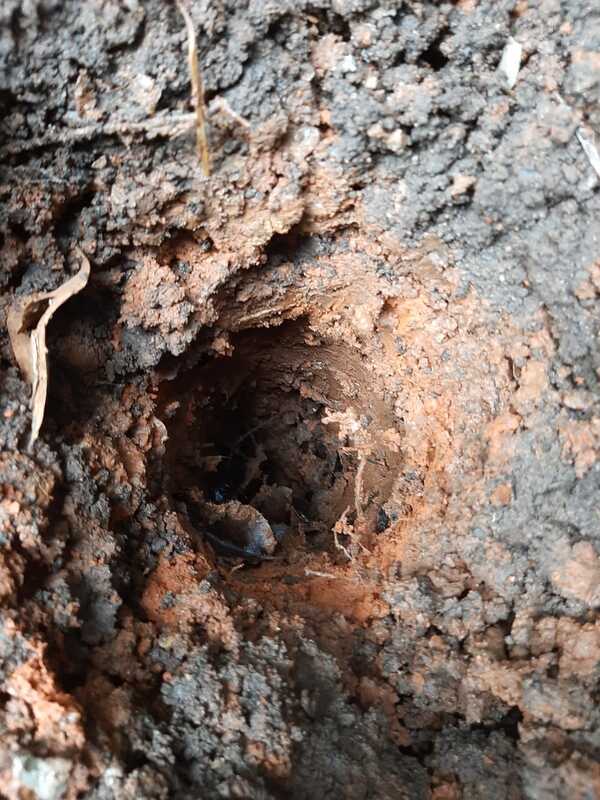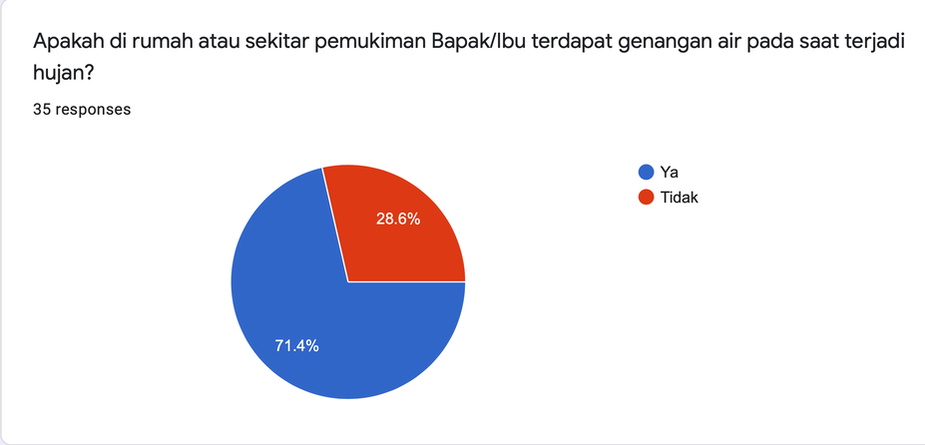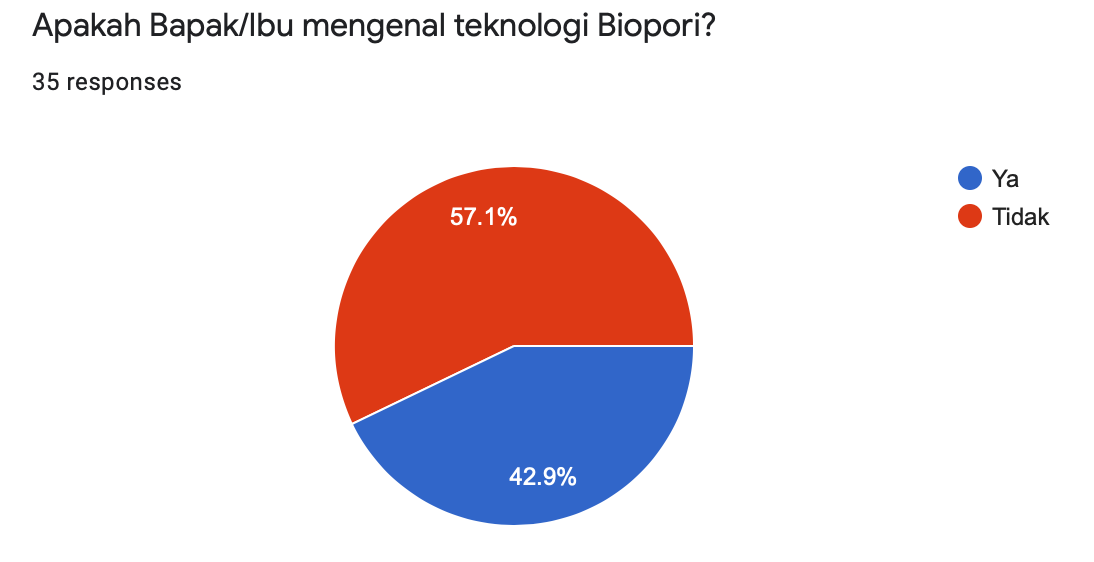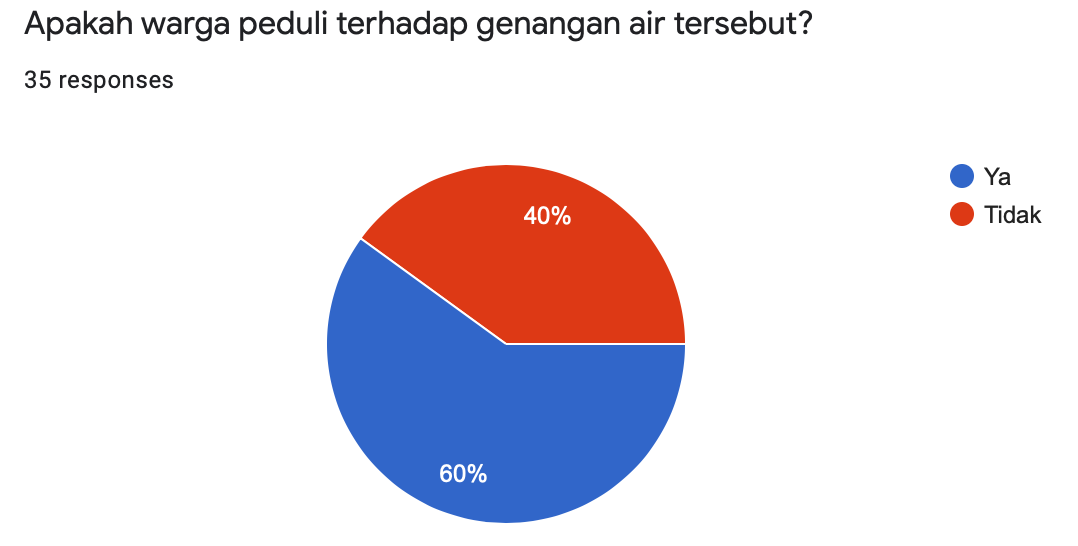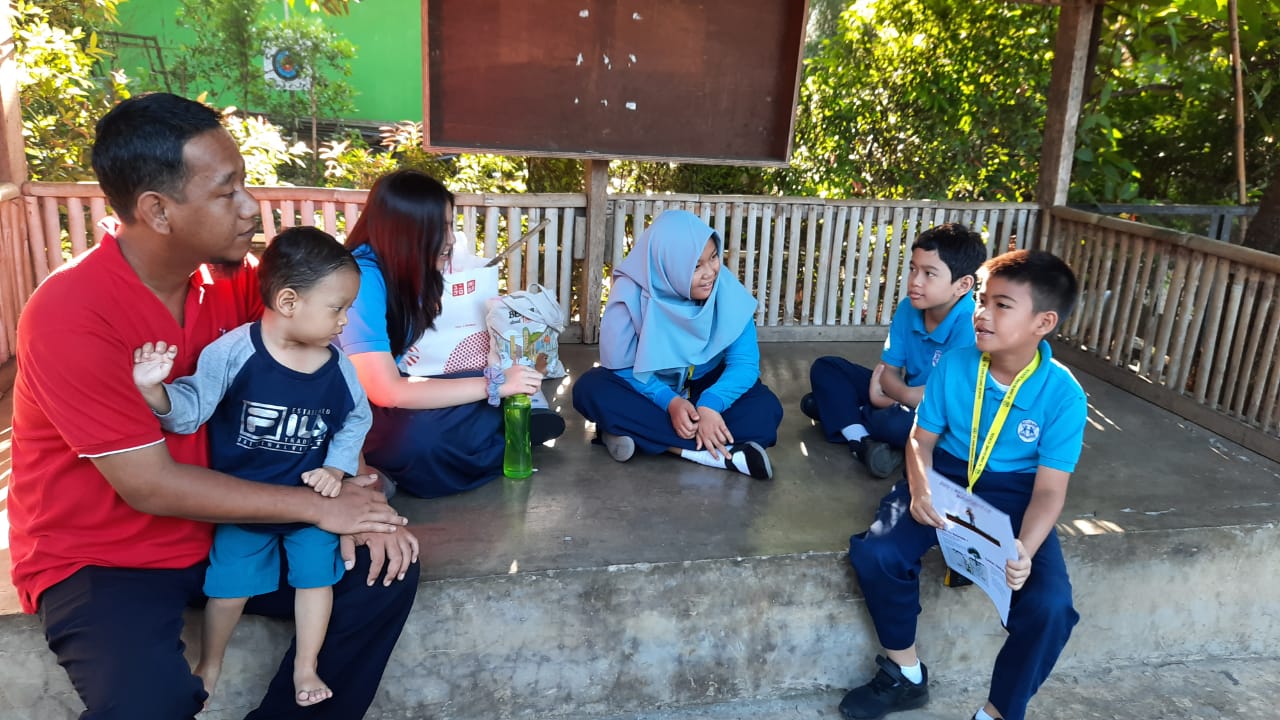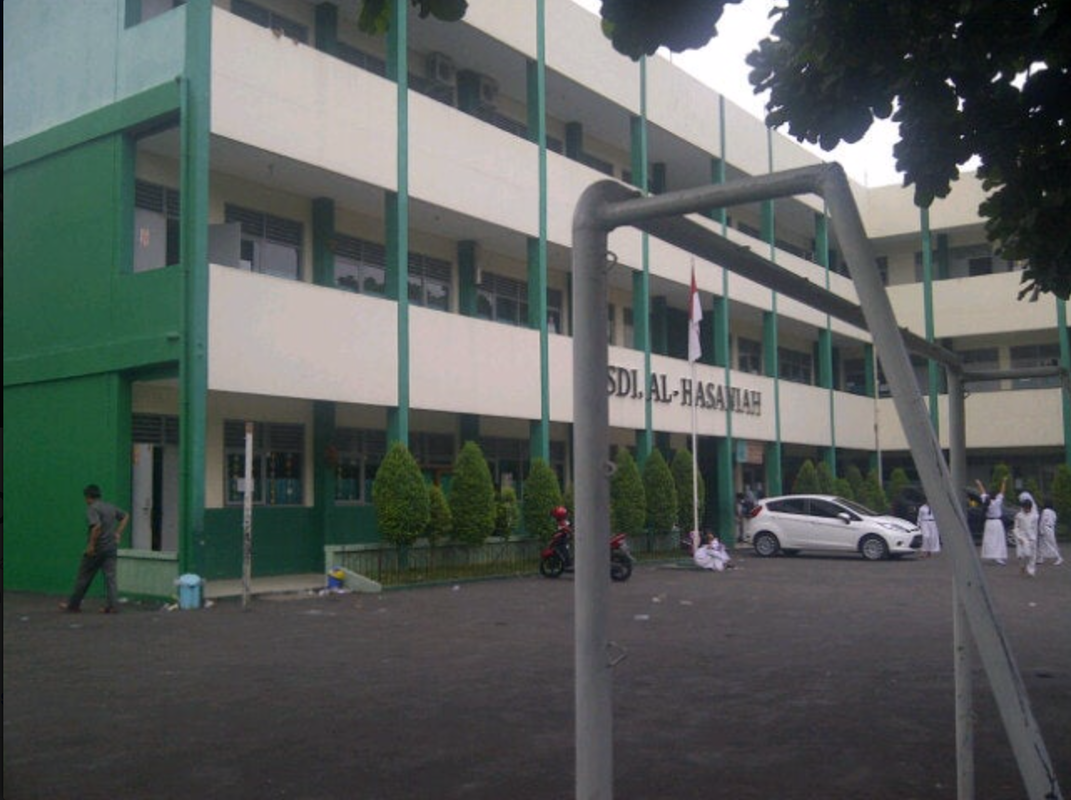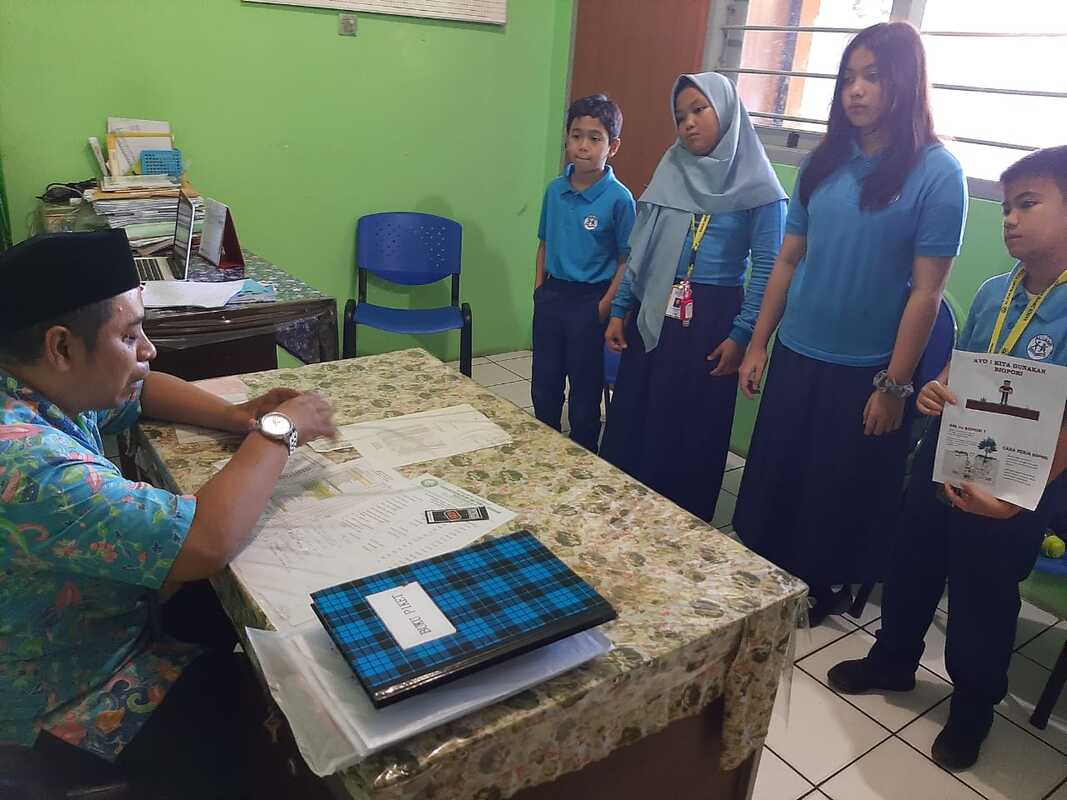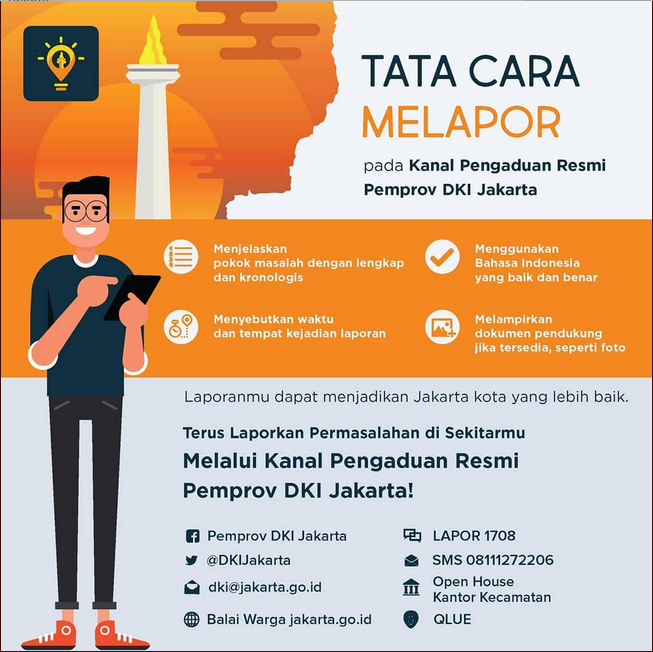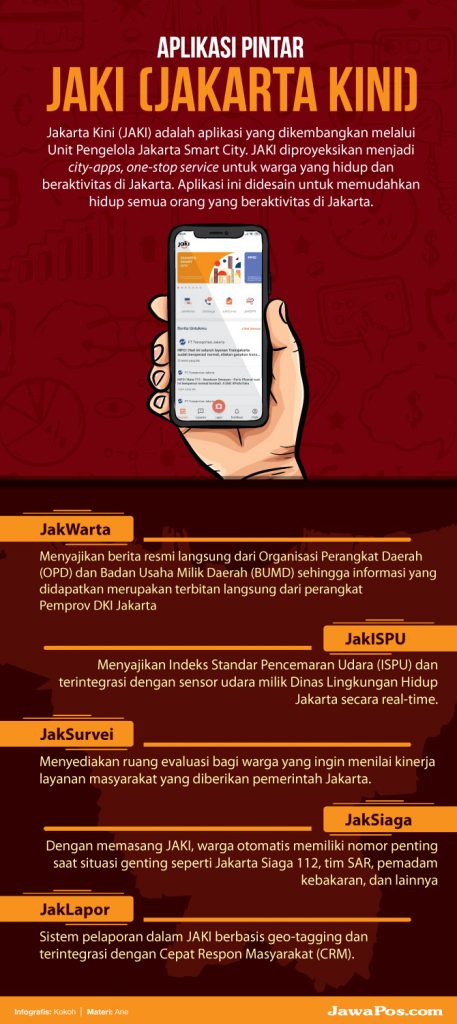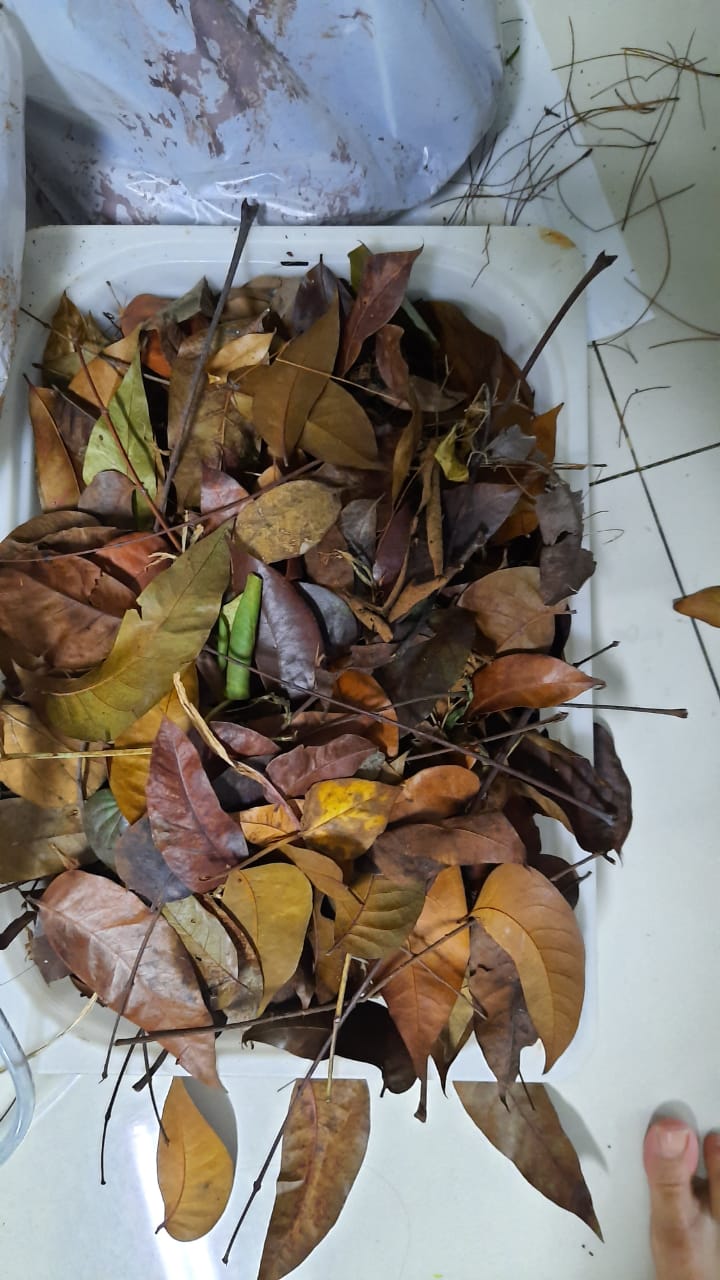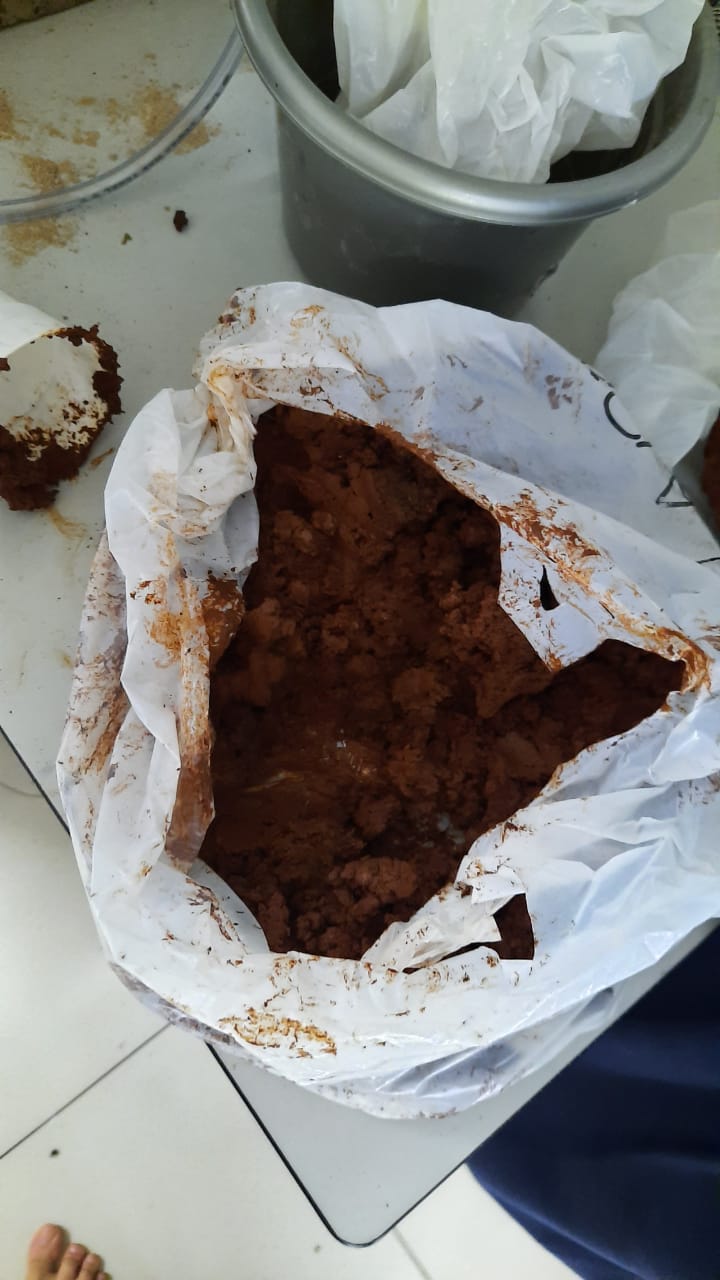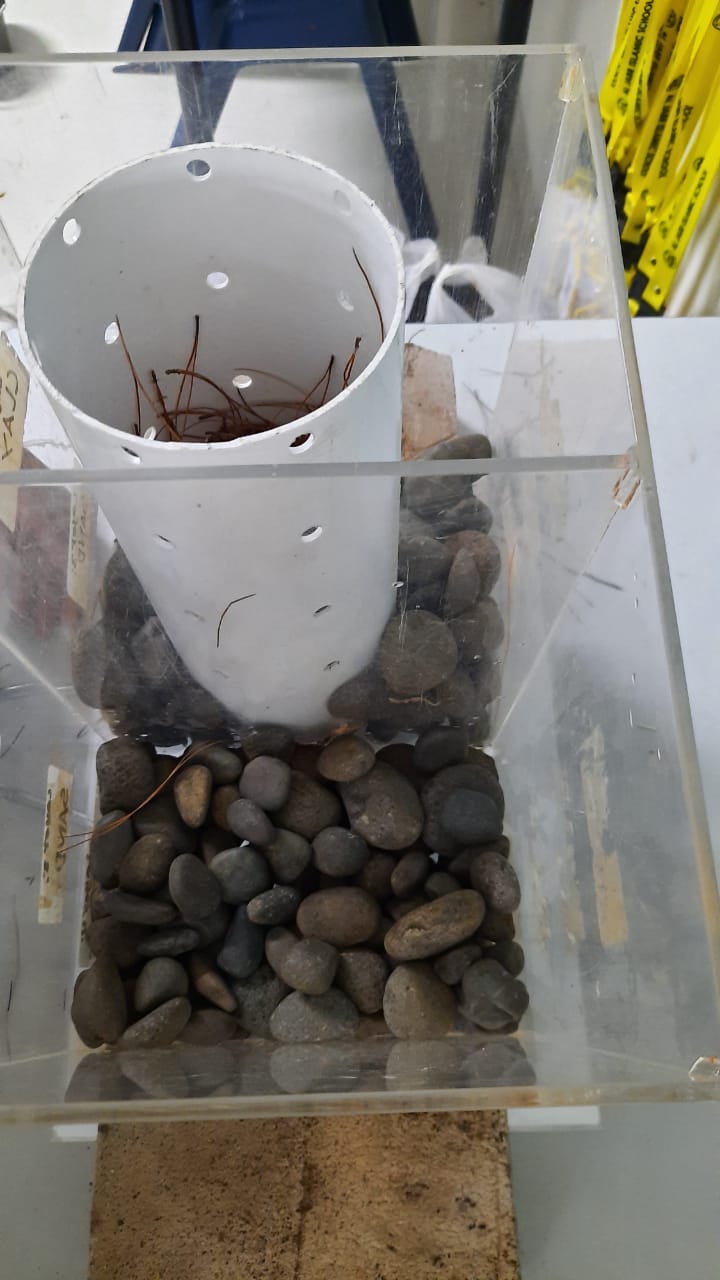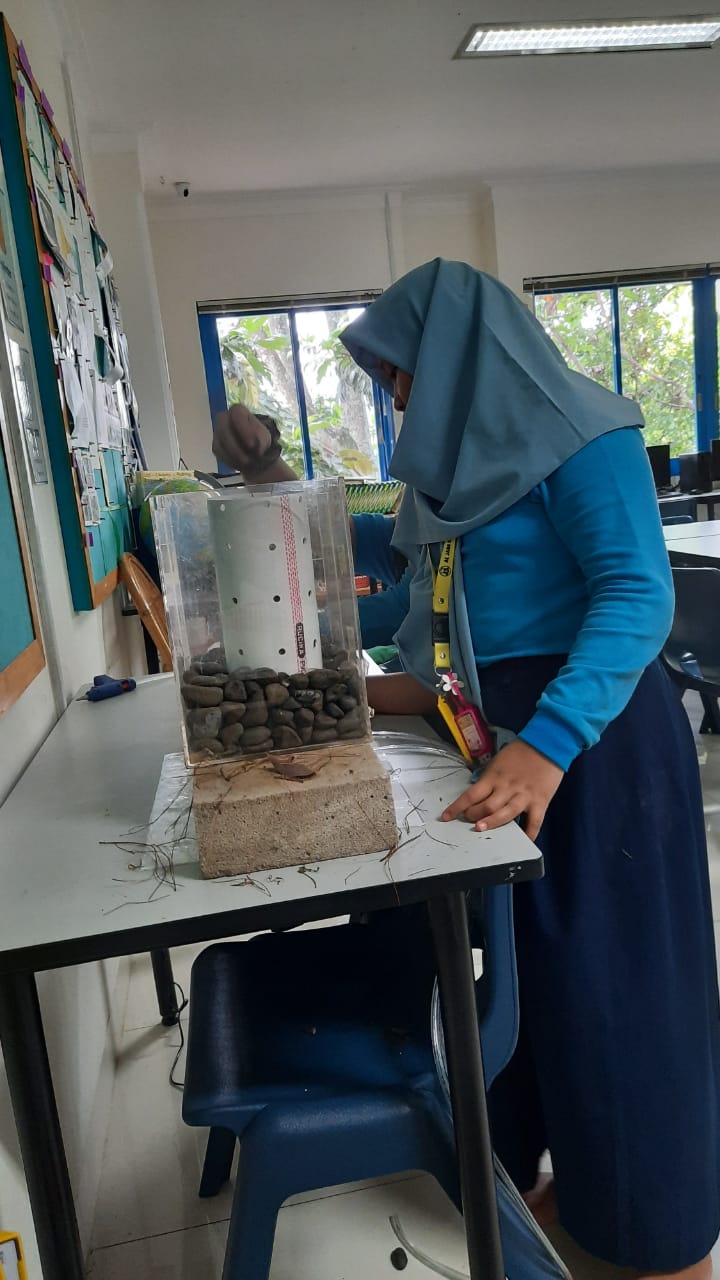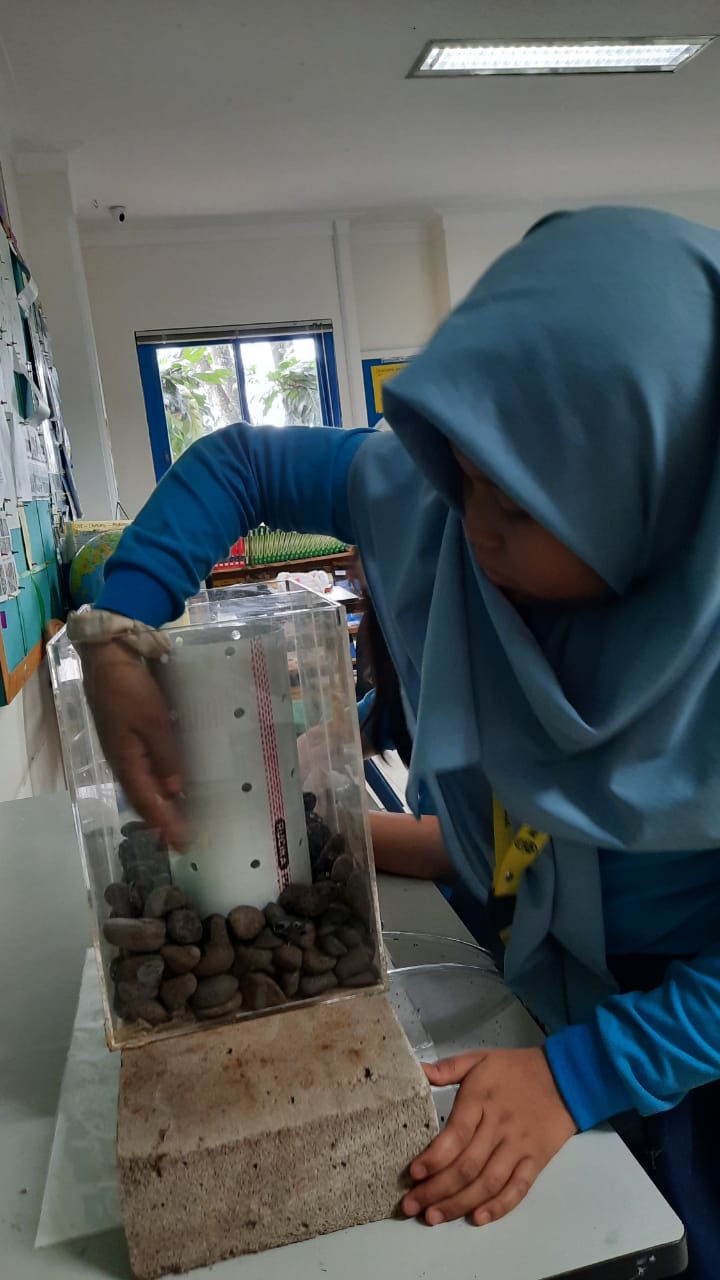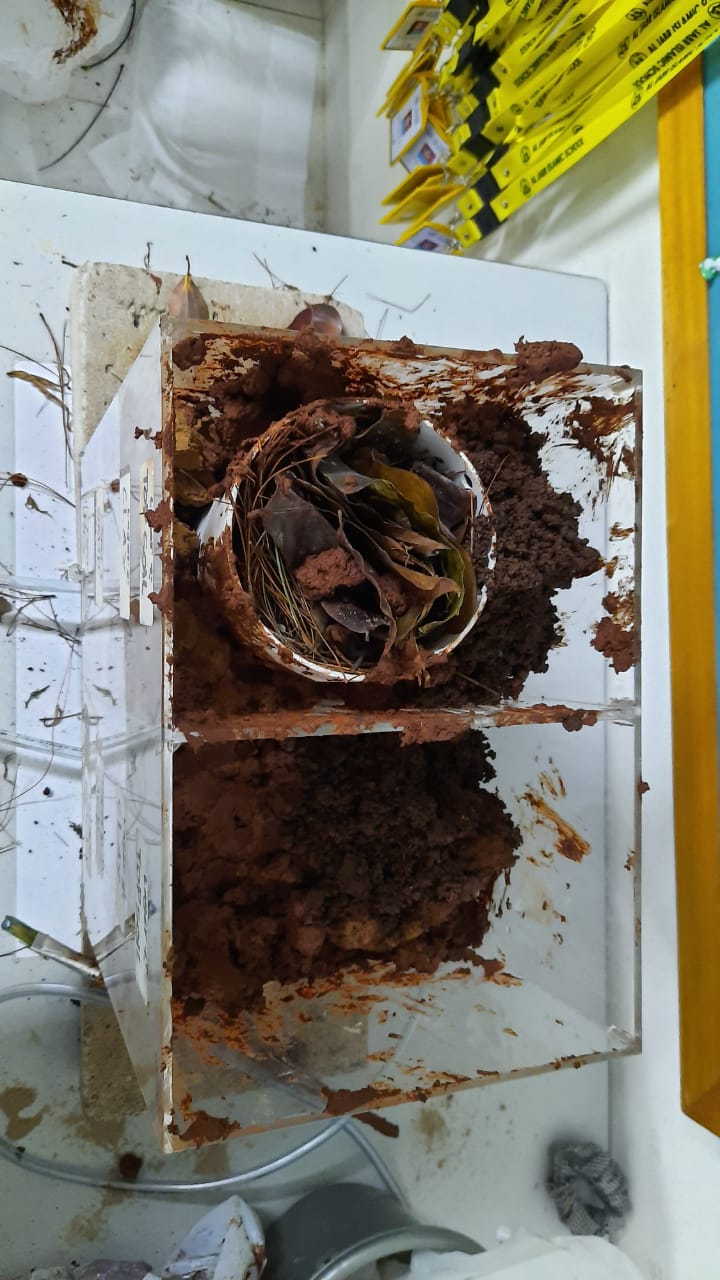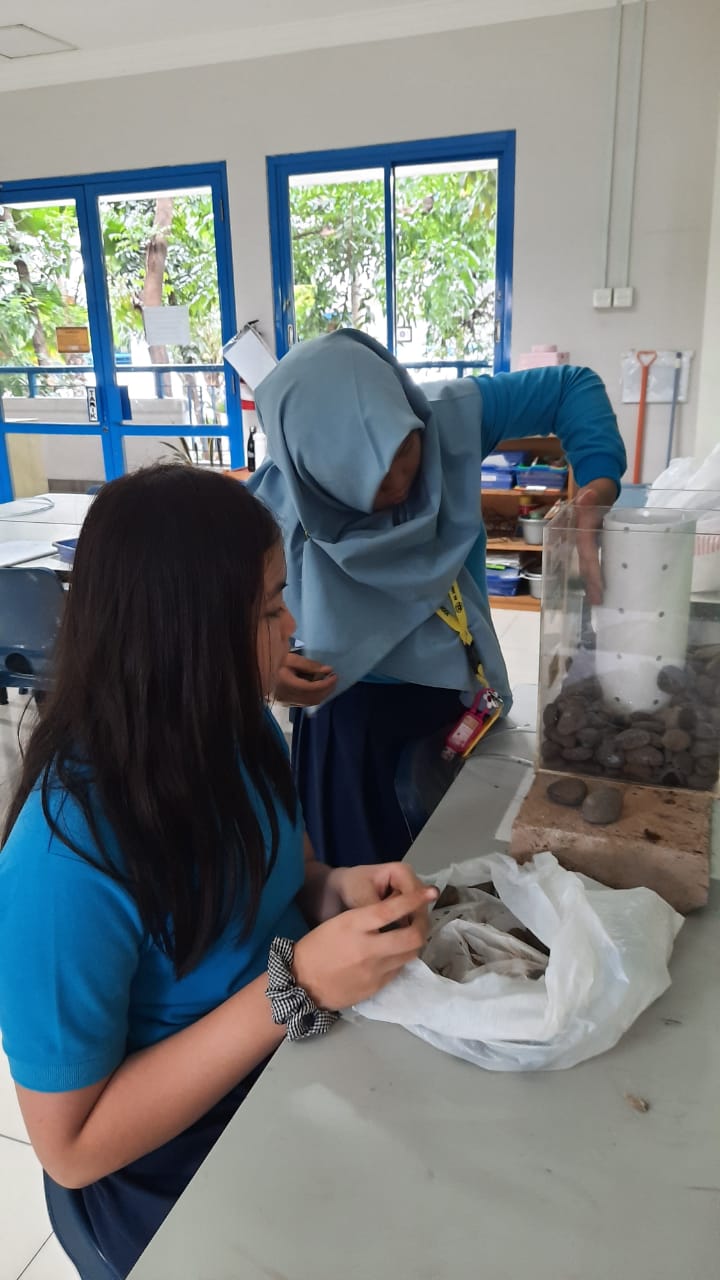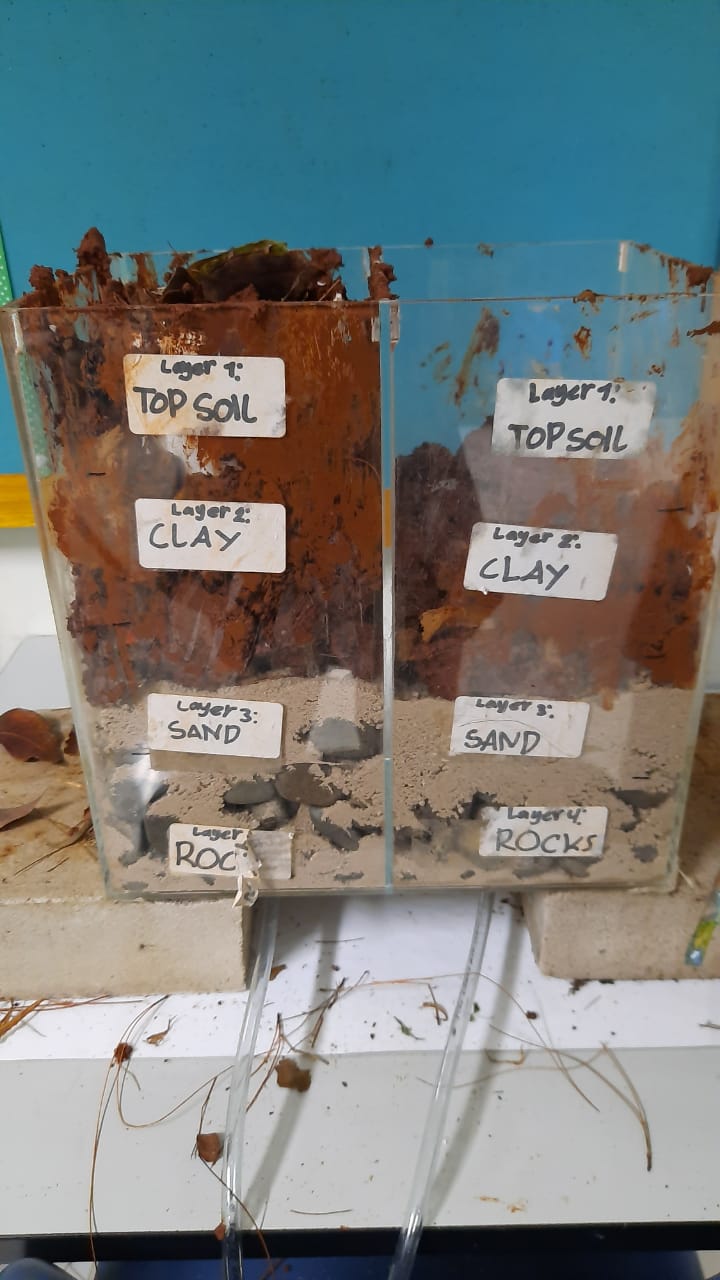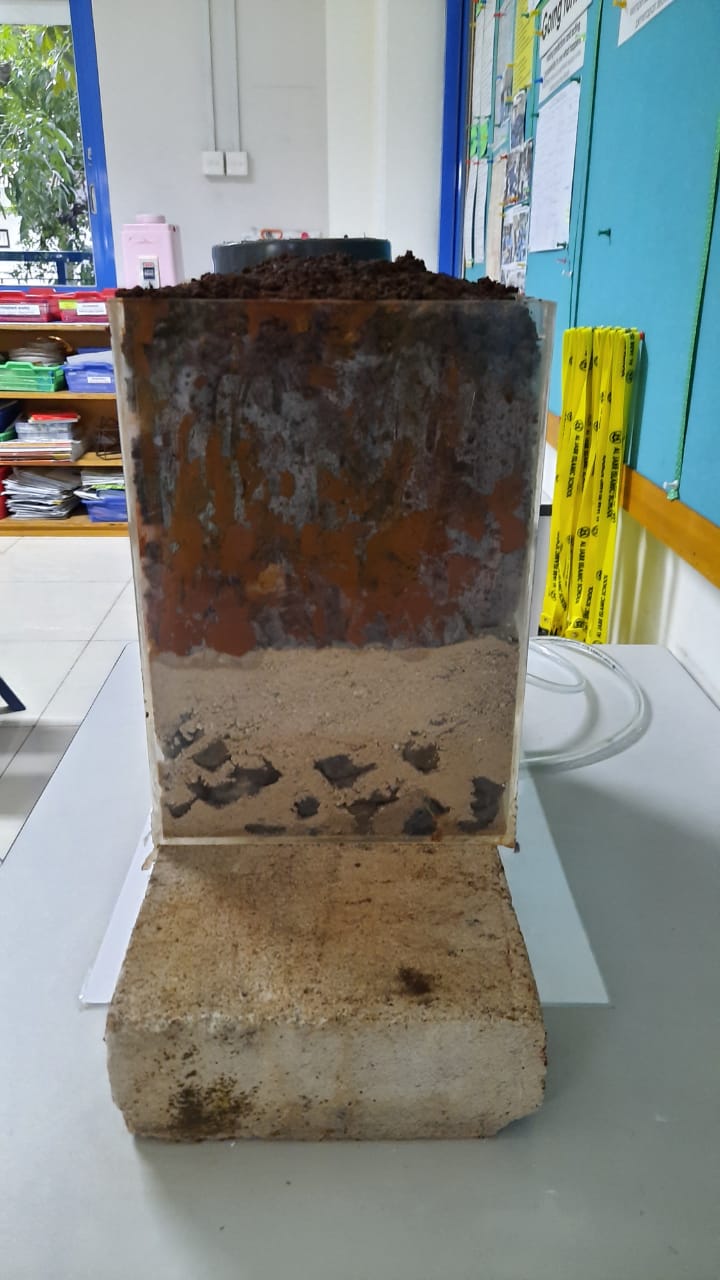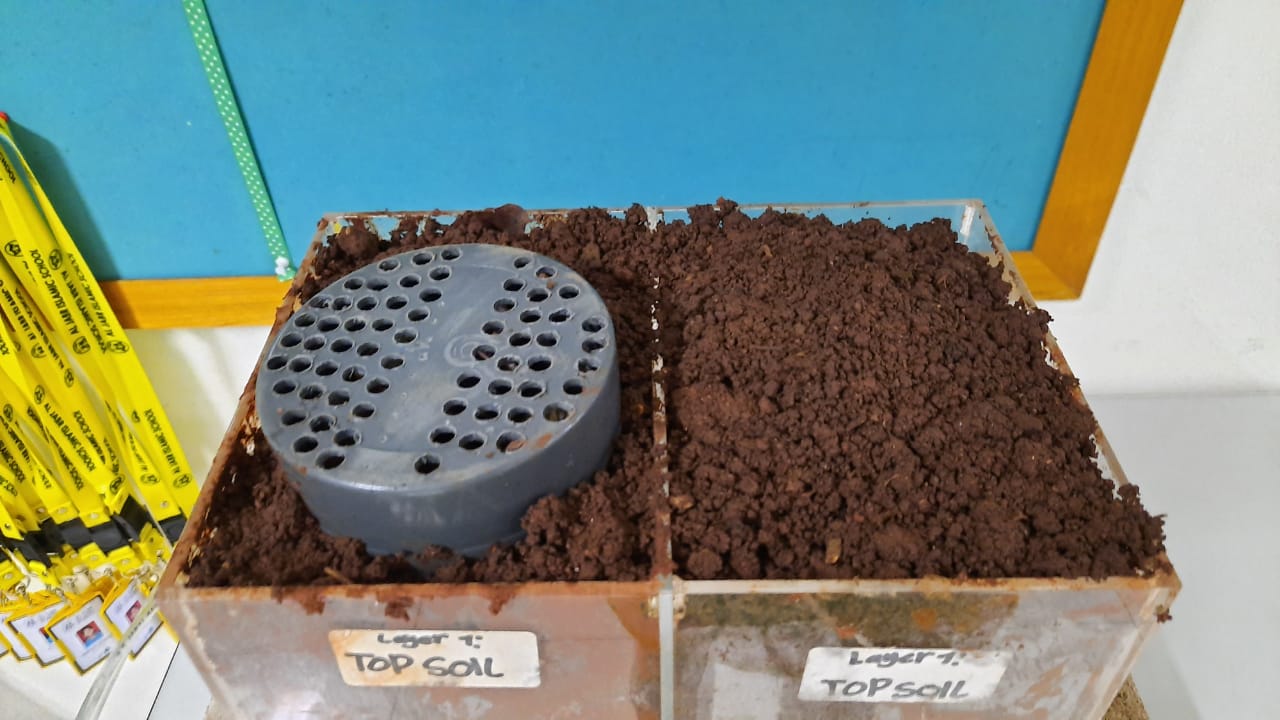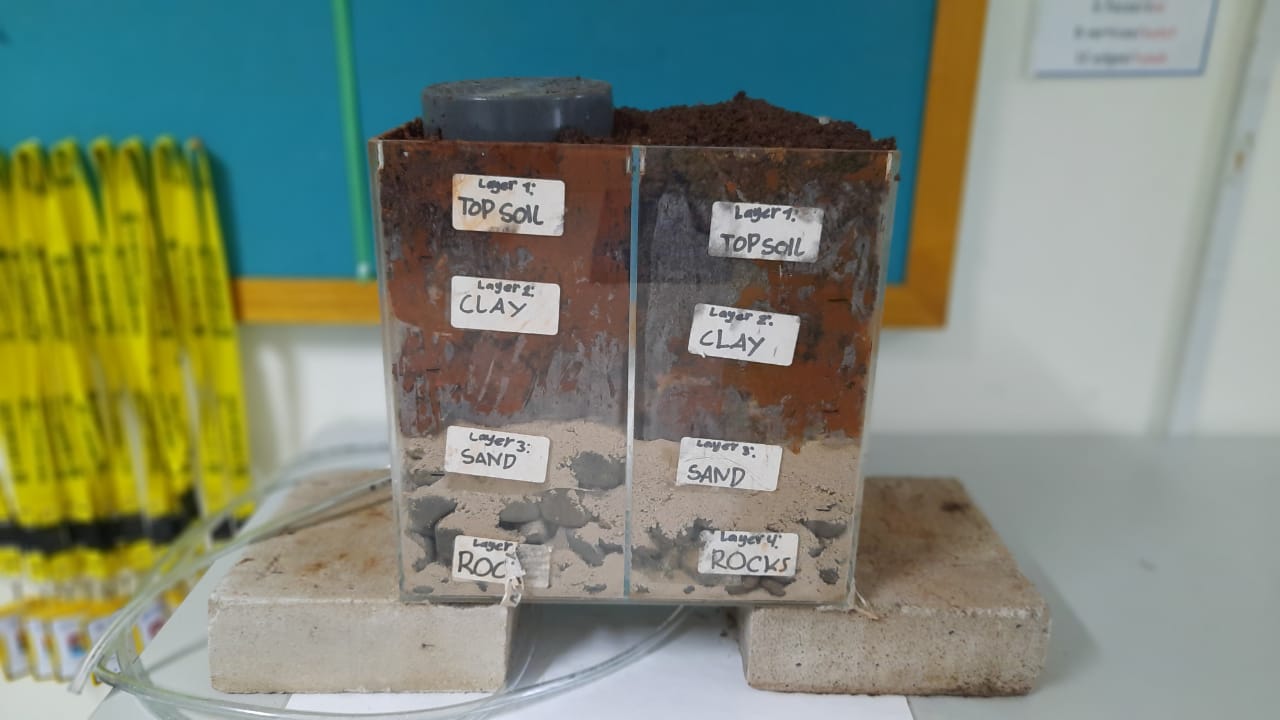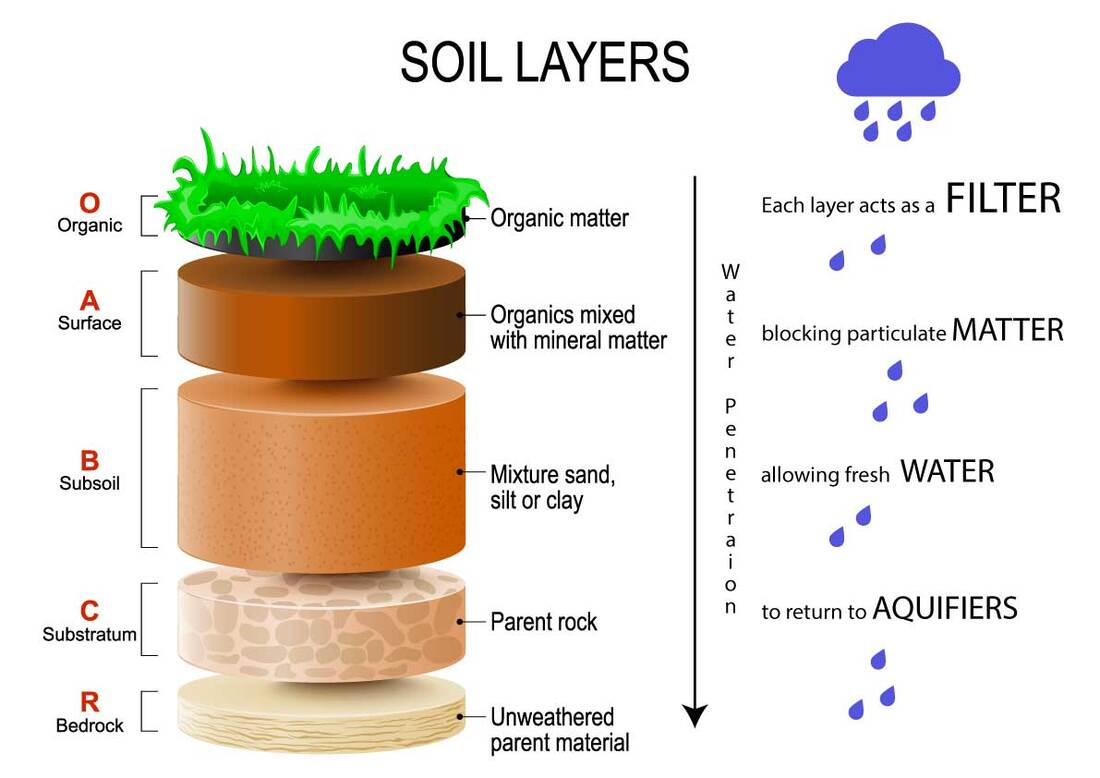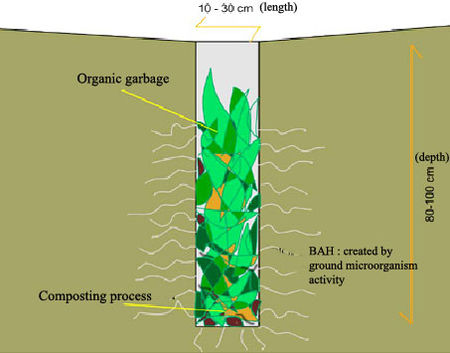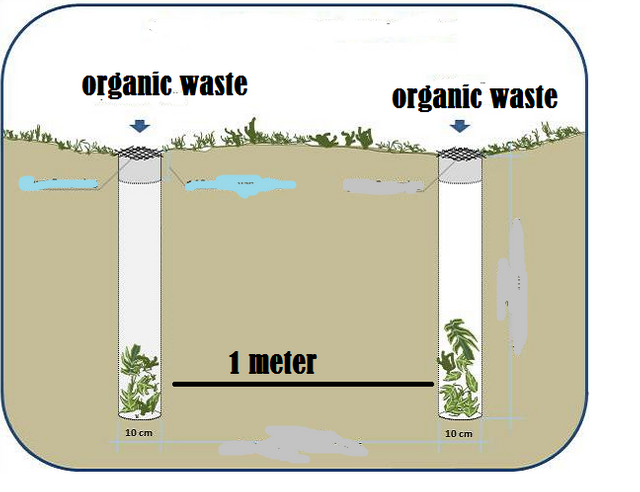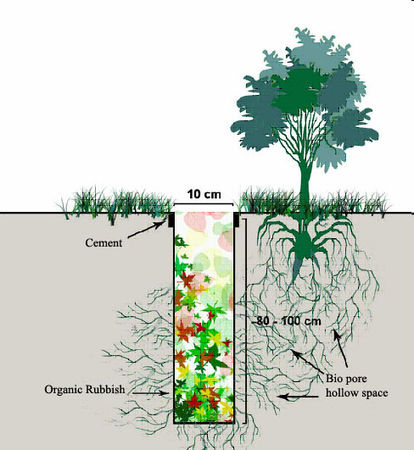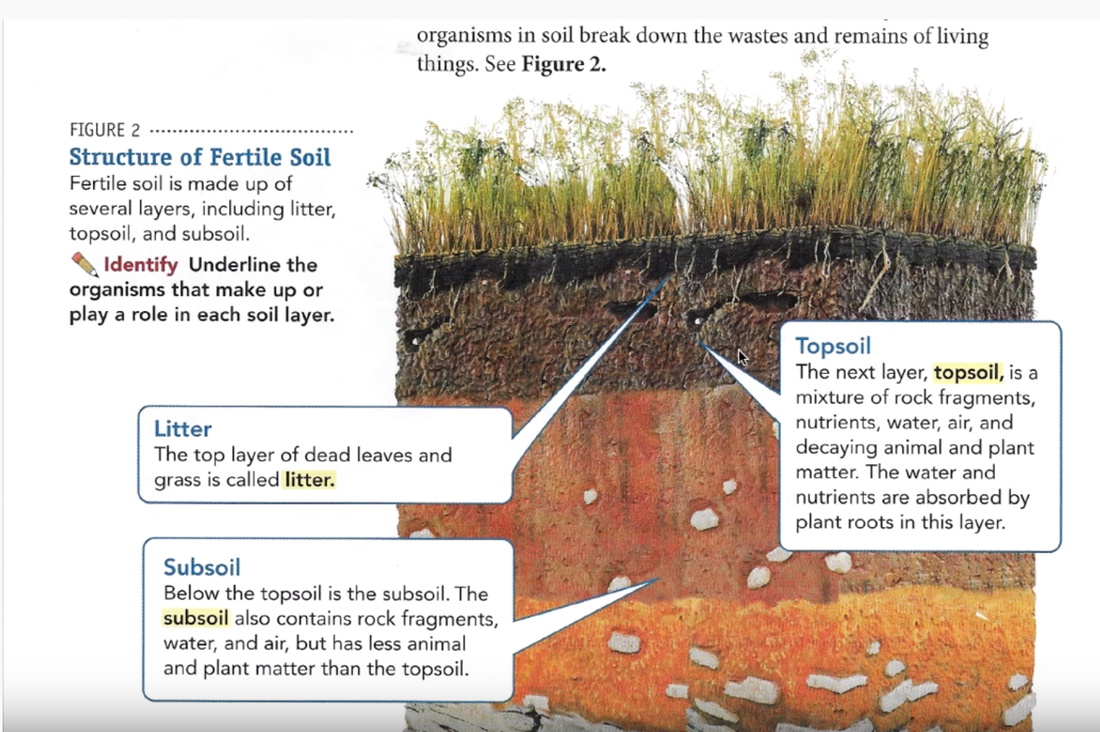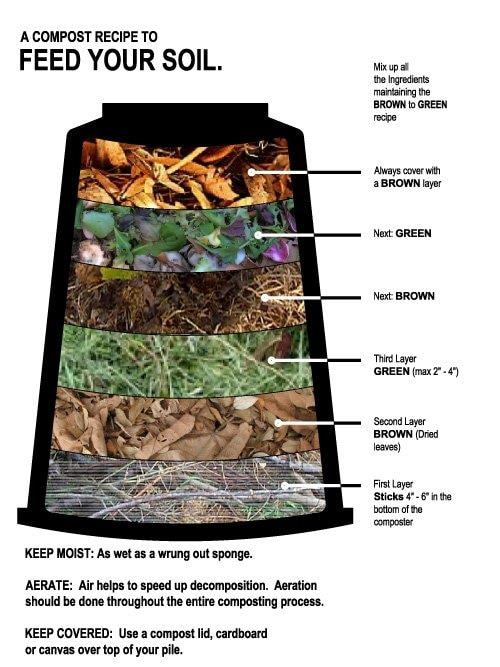Welcome to PYP Exhibition
2019-2020
HOW THE WORLD WORKS
|
Central Idea:
Scientific Knowledge is constantly evolving and has impact on human life Key Concept: Change, connection, responsibility Related Concept: Ingenuity, progress, ethics, and sustainability Line of Inquiry: 1. How government systems function 2. How decision-making practices reflect human rights 3. Impact of government on citizens |
Step 1: Identifying global significant issue
EXPLORING, WONDERING, AND QUESTIONING
Background of the problems and research PURPOSES
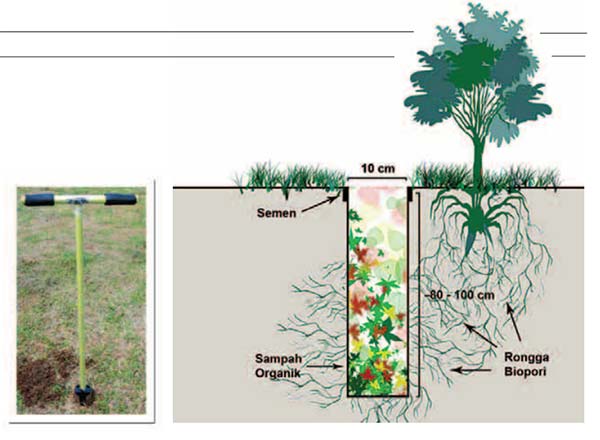
Introduction
The ongoing development of life requires a transformation of land-use that continues to increase. The expansion of land development for settlement and other infrastructure has impact for lessen of green open space area that serves to absorb rainwater. According to that situation, there is a need of effort to increase the absorption rate of rainwater into the ground, one of the method is using Biopore Infiltration Holes.
The ongoing development of life requires a transformation of land-use that continues to increase. The expansion of land development for settlement and other infrastructure has impact for lessen of green open space area that serves to absorb rainwater. According to that situation, there is a need of effort to increase the absorption rate of rainwater into the ground, one of the method is using Biopore Infiltration Holes.
Bio-pore Infiltration Holes (BLH) Information
Step 2: Determining Timing and Time Frame
MAKING CONNECTIONS BETWEEN PREVIOUS LEARNING AND CURRENT LEARNING
Under unit of inquiry
Mentors meeting and discussion
|
|
Assignments Submission
|
STEP 3: ENGAGING SUPPORT FROM THE LEARNING COMMUNITY
COLLECTING DATA AND REPORTING FINDINGS OR RESEARCHING AND SEEKING INFORMATION
Field trip to Ex Head of BAPPENAS in Jakarta Capital City Goverment
Gathering evidence on how students developed particular attributes of learner profiles that are relevant and meaningful to specific unit of inquiry.
The attributes depending, for example, personal learning goals, phase of development, or skills focus.
We met Dr.H.Dadang Solihin,SE,MA as a Director Head of Regional Bappenas period 2015-2019.
To collect data about roles and responsibilities of government to support Jakarta Infrastructure and technology.
The attributes depending, for example, personal learning goals, phase of development, or skills focus.
We met Dr.H.Dadang Solihin,SE,MA as a Director Head of Regional Bappenas period 2015-2019.
To collect data about roles and responsibilities of government to support Jakarta Infrastructure and technology.
| rencana_pembangunan_nasional.pdf | |
| File Size: | 2308 kb |
| File Type: | |
FIELD TRIP TO PEMDA DKI TATA RUANG DAN LINGKUNGAN HIDUP
PEMPROV DKI PLATFORMS
Fieldtrip Reflection
Fieldtrip to the inventor of the method of Bio pore is Dr. Kamir Pariadin Broto, Msc. from Farming Faculty of Bogor Farming Institute
| makalah_biopori.docx | |
| File Size: | 366 kb |
| File Type: | docx |
FieldTrip ReflectioN
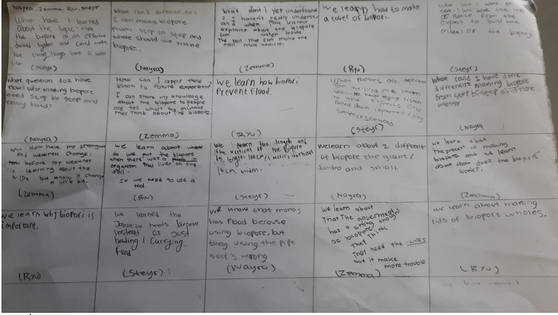
Ir. Kamir R. Brata, MSc. Researchers from the Department of Soil Science and Land Resources, Faculty of Agriculture, Bogor Agricultural University continues to promote the benefits of “Lubang Resapan Biopori”/ Biopore Infiltration Holes.He was explain about the benefits Resapan Biopori.
“Biopori hole” is a hole with 10-30 cm diameter and about 30-100cm deep. It is not only to absorp and collect over loaded rain waters, but also to improve the soil structure and increasing the absorbency of the soil. According to Dr. Kamir R. Brata, the inventor of the appropriate technology, in addition in minimizing flood risks, biopori technology will also reduce the household's trash, since organic waste is used to fill the holes with the 3 R (reduce, reuse, and recycle). Thus, we don’t need means of transportation to transport them to their disposal.
The organic waste from households supplied into the “Biopori hole” will be utilized by the soil organisms, such as worms and termites to help the decomposting of the organic trash, therefore, they can reduce greenhouse gas emissions (CO2 and methane). This way the soil naturally becomes more porous, improving the soil's absorbency and ability to cope with flooding. Rain waters are quickly being absorbed into the soil as water storage to ensure the availability of water in the dry season. As human beings we need water, and we also produce trashes. If we utilize rain waters properly and manage our trashes in our own lots, then the earth would not either be too thirsty as stated in message of World Water Day, presented on the 22nd March 2012, but or be hungry. Both the biodiversity in the soil as well as surface will be synergetic to improve the soil fertility.
“Biopori hole” is a hole with 10-30 cm diameter and about 30-100cm deep. It is not only to absorp and collect over loaded rain waters, but also to improve the soil structure and increasing the absorbency of the soil. According to Dr. Kamir R. Brata, the inventor of the appropriate technology, in addition in minimizing flood risks, biopori technology will also reduce the household's trash, since organic waste is used to fill the holes with the 3 R (reduce, reuse, and recycle). Thus, we don’t need means of transportation to transport them to their disposal.
The organic waste from households supplied into the “Biopori hole” will be utilized by the soil organisms, such as worms and termites to help the decomposting of the organic trash, therefore, they can reduce greenhouse gas emissions (CO2 and methane). This way the soil naturally becomes more porous, improving the soil's absorbency and ability to cope with flooding. Rain waters are quickly being absorbed into the soil as water storage to ensure the availability of water in the dry season. As human beings we need water, and we also produce trashes. If we utilize rain waters properly and manage our trashes in our own lots, then the earth would not either be too thirsty as stated in message of World Water Day, presented on the 22nd March 2012, but or be hungry. Both the biodiversity in the soil as well as surface will be synergetic to improve the soil fertility.
Additional Resources
|
|
|
Guest Speaker : Ir. Lindung Bayu Kumara Tungga Dewa (Civil Architect)
| air_sumber_kehidupan.pptx | |
| File Size: | 8435 kb |
| File Type: | pptx |
STEP 4: ORGANIZING THE LEARNING
EXPERIMENTING AND PLAYING WITH POSSIBILITIES SOLVING PROBLEMS IN A VARIETY OF WAY
Soil layers and water infiltration experiment
Biopore Infiltration Holes Experiments
Biopore infiltratiOn holes Experiment at school
STEP 5: MONITORING THE EXHIBITION
TAKING AND DEPENDING A POSITION
Action and international-mindedness
Gathering evidence , in connection with approaches to learning. From this activities, students reflecting on being knowledgeable and inquirers while using a range of research skills appropriate for particular aspects during their investigations (such as planning, online survey, and graphing tools).
Action PLanning
- Our action is connected to agency, the learner profile and international mindedness.
- Our action is our initiated and can be individual and collective.
- Our action is authentic, meaningful, and mindful
- Our action can happen at anytime; it can be short or long term, revised and ongoing
- Our action is supported by learning community.
- Our action is demonstration of action include, participation, advocacy, and social entrepreneurship.
Conducting Survey to margasatwa community (Gg.Mushola H.amin)
1. SOCIAL ENTERPRENEURSHIP
The graphic shown that rain water overflowing always happened during rainy seasons in this area.(71,4% said yes and 28,6% said No). The people who live in this community unknown about Biopore Infiltration Holes technology. The data interpreted that (42,9% said Yes and 57,1% said No),taking care to overwater flow is around 60% yes and 40% No.The people who live in this community think about the solution how to minimise over flowing to prevent flooding. This area also has an open green area as a public place, however we are not found the Biopore yet.As we do research about Biopore, we have a plan to to take action in this community by conducting Biopore experiment and sharing the benefit of this technology toward soil and water conservation.
|
Andara Gg.H.Amien Residents Agree to Build Biopore Holes
We conducted survey to Andara community in Mushola H.Amin, then we interviewed RT/RW his name is Pak Abdul Hay. He said that "this area during rainy season always gets overflowing ground water." As the rainy season approaches, residents are being urged to take part in efforts to minimize flooding. According to Hydro-geologist Fatchy Muhammad of the Indonesian Water Society said many residents were still unaware that rainwater should be managed vertically, not horizontally. Technology of biopore holes not only helps to absorb rainwater, but also functions as a waste management system for organic waste. A biopore can be made easily using a manual drill. Technology biopore holes greatly help reduce water loads produced by the rain on our waterways. This will also reduce the possibility of overflowing waterways and can minimize flooding. These systems are affordable for the middle class households. |
2. Advocacy
Sharing knowledge to SD Islam al-hasaniah
Your browser does not support viewing this document. Click here to download the document.
Your browser does not support viewing this document. Click here to download the document.
3. Participation
Jakarta Smart city Environment
Giving voice and conduct survey to the government in the feature of Jak-survey related overflowing water infiltration around community by using JAKI apps.
Giving voice and conduct survey to the government in the feature of Jak-survey related overflowing water infiltration around community by using JAKI apps.
create a newsletter to Pemda dki about biopore infiltration holes technology research to be uploaded in the jakarta smart city platform
STEP 6: SHARING THE EXHIBITION
ESTABLISHING AND TESTING THEORIES
While our exhibition is expected culminate in a final-product or experience. To make our learning process of exhibition visible. Students, in collaboration with mentors, use existing- or develop new-tools, artefacts and strategies to further explore and present issues and opportunities. Science and technology develop models, technical drawing and experimental procedurs.
Model of BioporE Experiment
|
The Biopore Infiltration Holes has been made it can be filled with organic rubbish. It needs to be add again and again, for the contents will be getting decrease because of mouldiness. The compost which will be produced by this hole can be taken for fertiliser in the end of dry season.
For the safety (to prevent the accident) the Bio pore has to be covered with plastic cover or used tin can (but the cover has to be made small hole for running the water into the hole). While the edge of the BIH, it needs to be given lode from cement. Bio pore is alternative technology for absorbing rain water beside the absorbing well. Bio pore can be called “The palace for worm” although its dweller is not only worm, but because the contents is organic rubbish, so it will stimulate small animals, such as ant, worm, termite come into the hole and making bio pore as small tunnels, so that the water can be soon absorbed. |
Reflection on the exhibition process
Reflection on he exhibition from different members of the learning community support the review of the exhibition process. Students and mentors reflections may be documented through the ongoing development of a PYP exhibition journal.
There are ten special benefit for Bio pore Infiltration holes:
- To keep ground water reserve.
- To prevent the subsidence of the land and the cracking of the land.
- To hamper the intrusion of the sea water.
- To converse the organic rubbish to become compost.
- To promote the Fertility of the soil.
- To keep the biological variety in the soil.
- The disease such as malaria, Dengue Fever, etc which is as the result of the water which has been filling a place and not flowing can be overcome.
- The rubbish which can make pollution of the water and the air can be reducing.
- The gas emission (CO2 and Methane gas) of the glass house can be reduce.
- To reduce flood, land-slide and drought.
Virtual Celebrations
Exhibition process
Your browser does not support viewing this document. Click here to download the document.
| technology_infrastructure_construction_exhibition_process.pptx | |
| File Size: | 1448 kb |
| File Type: | pptx |
VIDEO PRESENTATION
https://drive.google.com/folderview?id=1UbV9-o4FEDt6FP0hEgl-utmLsIDKO3OP
VIDEO conferenCING: EXHIBITION PROCESS
REferences
Brata, K. R. 1990. The Effects of Plant Residue Addition on the Aggregation of a Hardsetting Western Australian Wheatbelts Soil. M.Sc. Thesis. Department of Soil Science and Plant Nutrition, Faculty of Agriculture, The University of Western Australia, Nedlands.
Brata, K. R. 2004. Modifikasi Sistem Microcatchment Untuk Konservasi Tanah dan Air Pada Pertanian Lahan Kering. Makalah disampaikan pada Kolokium Hasil Penelitian dan Pengembangan Sumber Daya Air. Bandung, 5-6 Oktober 2004
Brata, K. R. 2008. Implementasi Sistem Peresapan Biopori Untuk Konservasi Sumber Daya Air. Makalah disampaikan pada Paparan Sistem Peresapan Biopori di Ruang Rapat Dit. Bina Pengelolaan Sumberdaya Air, Ditjen. SDA, Jl. Pattimura 20, Jakarta Selatan, tanggal 19 Februari 2008.
Brata, K. R. 2004. Modifikasi Sistem Microcatchment Untuk Konservasi Tanah dan Air Pada Pertanian Lahan Kering. Makalah disampaikan pada Kolokium Hasil Penelitian dan Pengembangan Sumber Daya Air. Bandung, 5-6 Oktober 2004
Brata, K. R. 2008. Implementasi Sistem Peresapan Biopori Untuk Konservasi Sumber Daya Air. Makalah disampaikan pada Paparan Sistem Peresapan Biopori di Ruang Rapat Dit. Bina Pengelolaan Sumberdaya Air, Ditjen. SDA, Jl. Pattimura 20, Jakarta Selatan, tanggal 19 Februari 2008.

